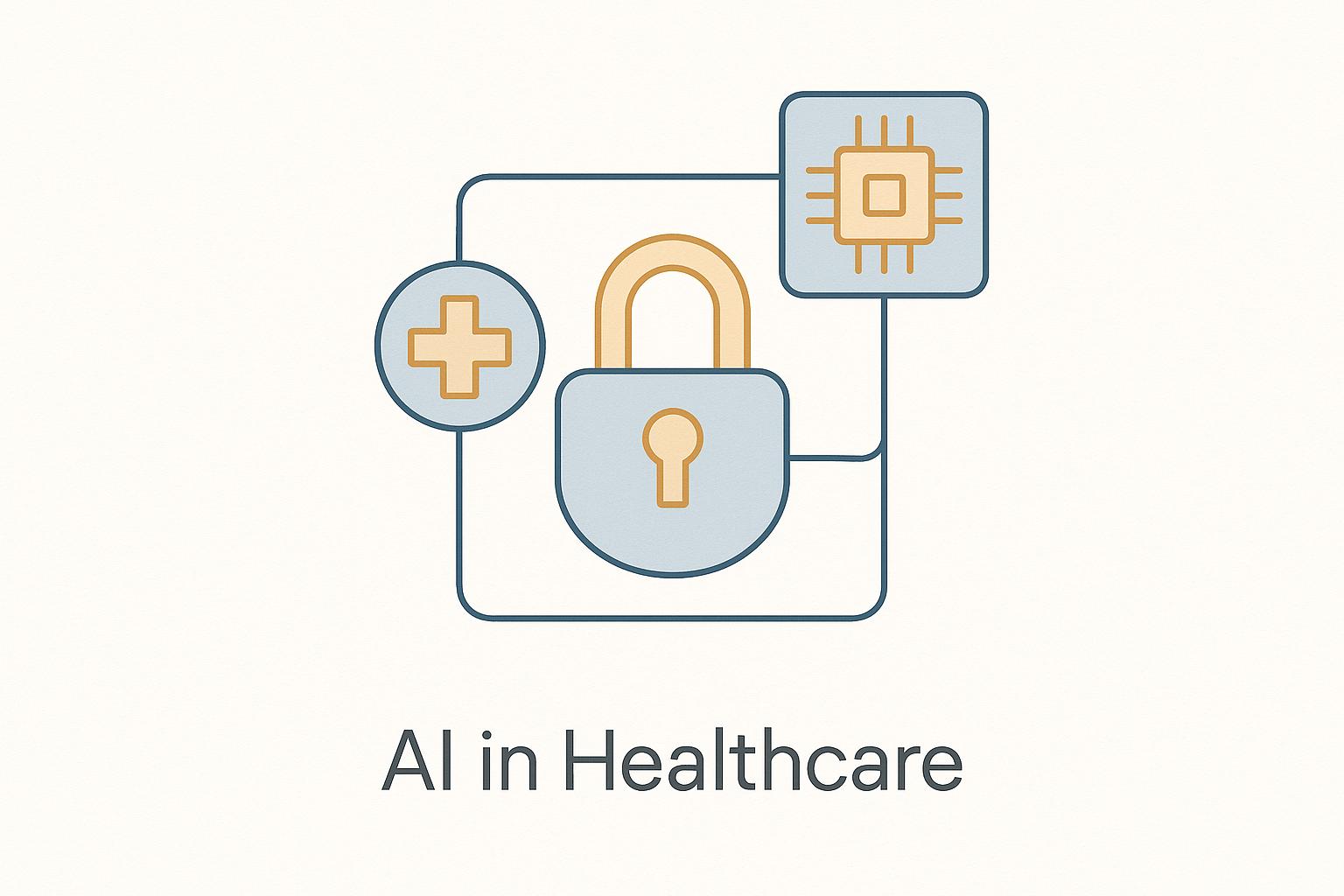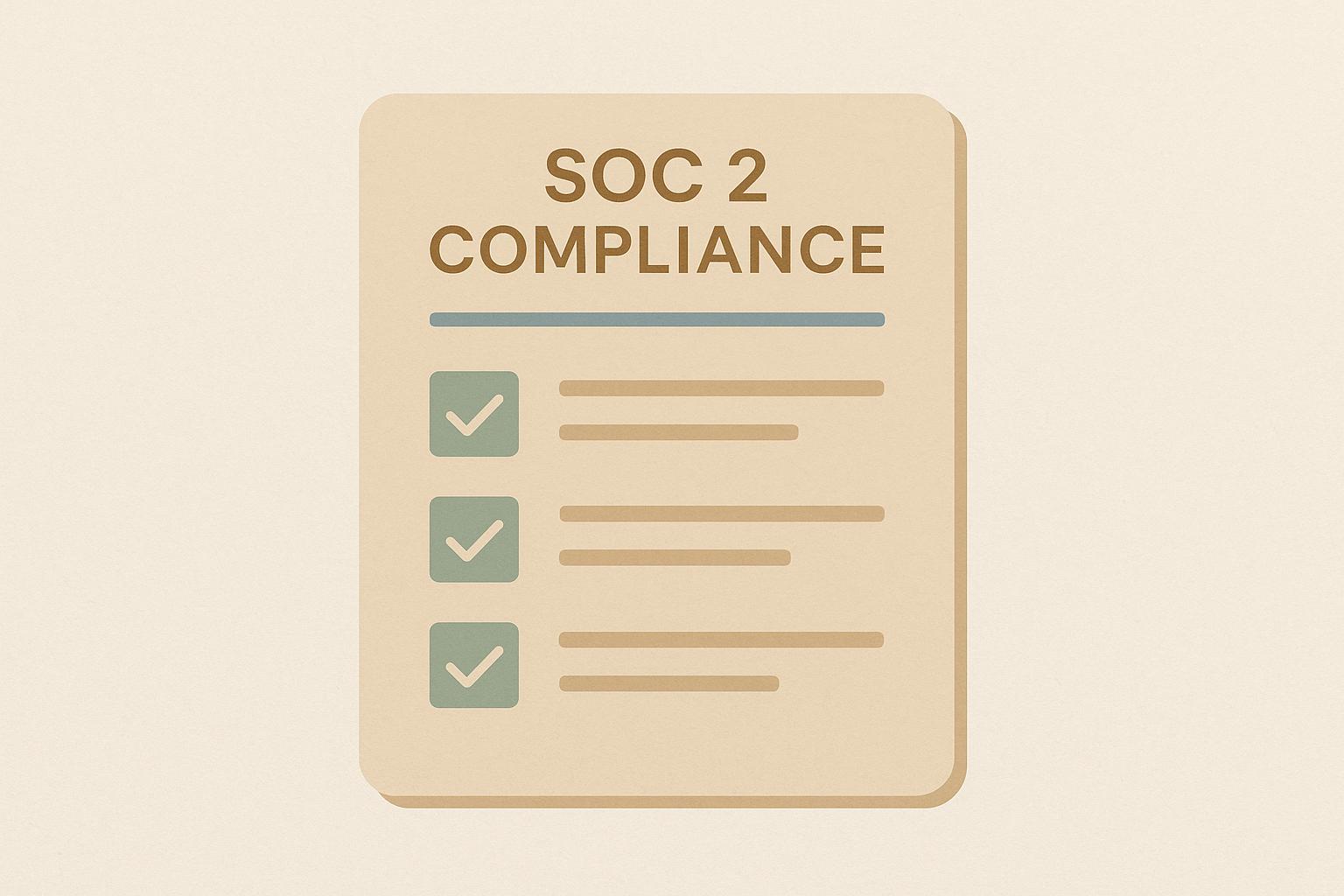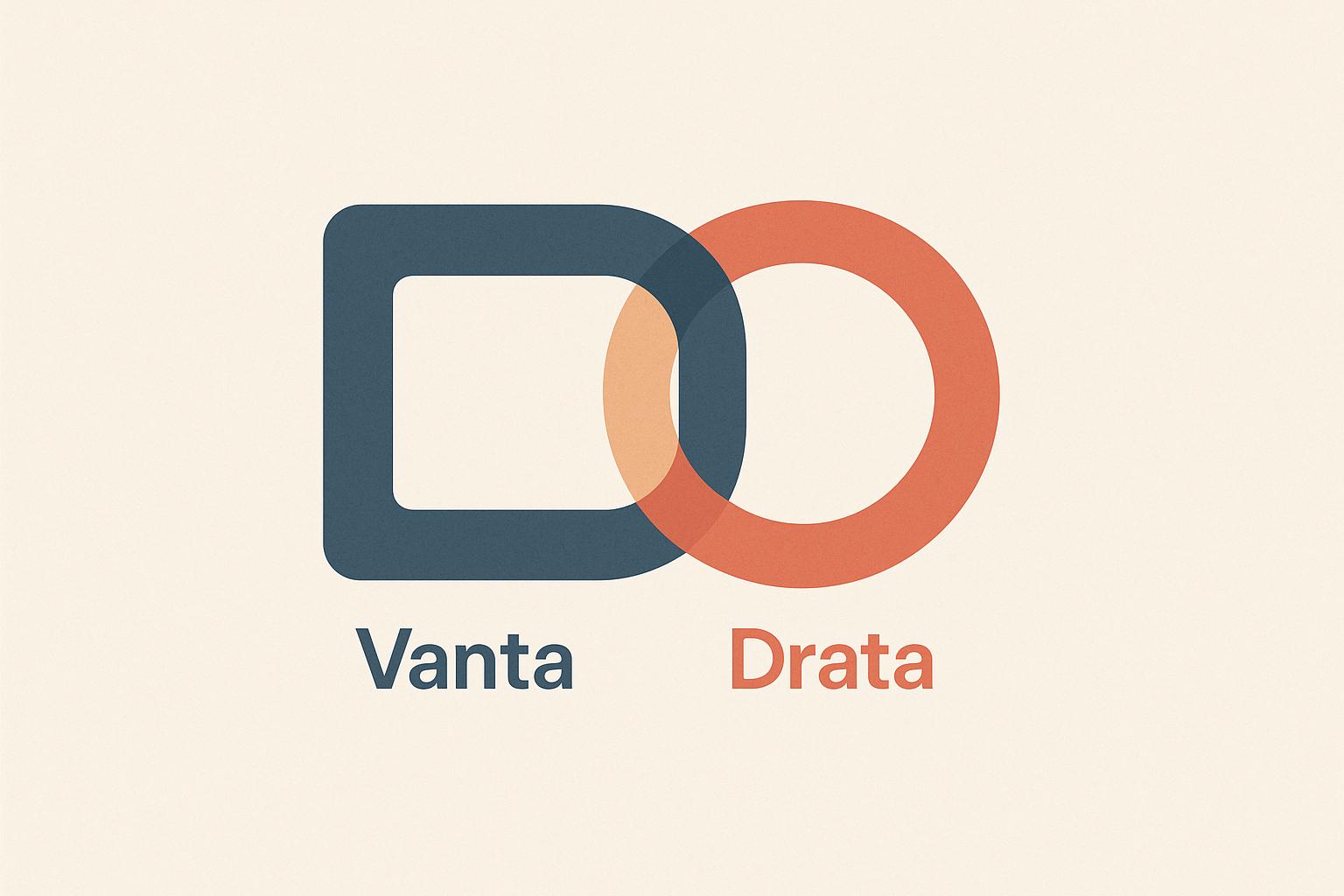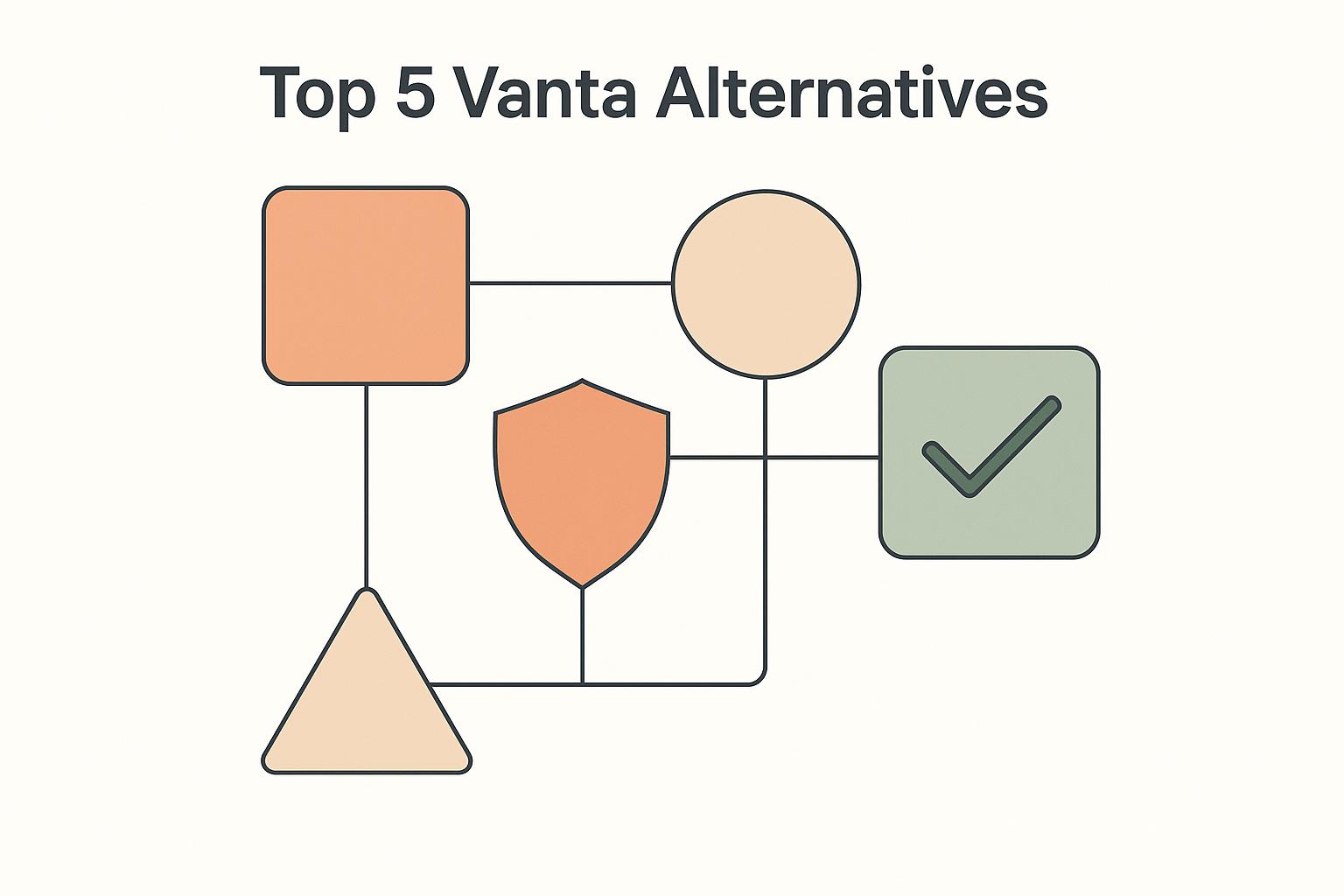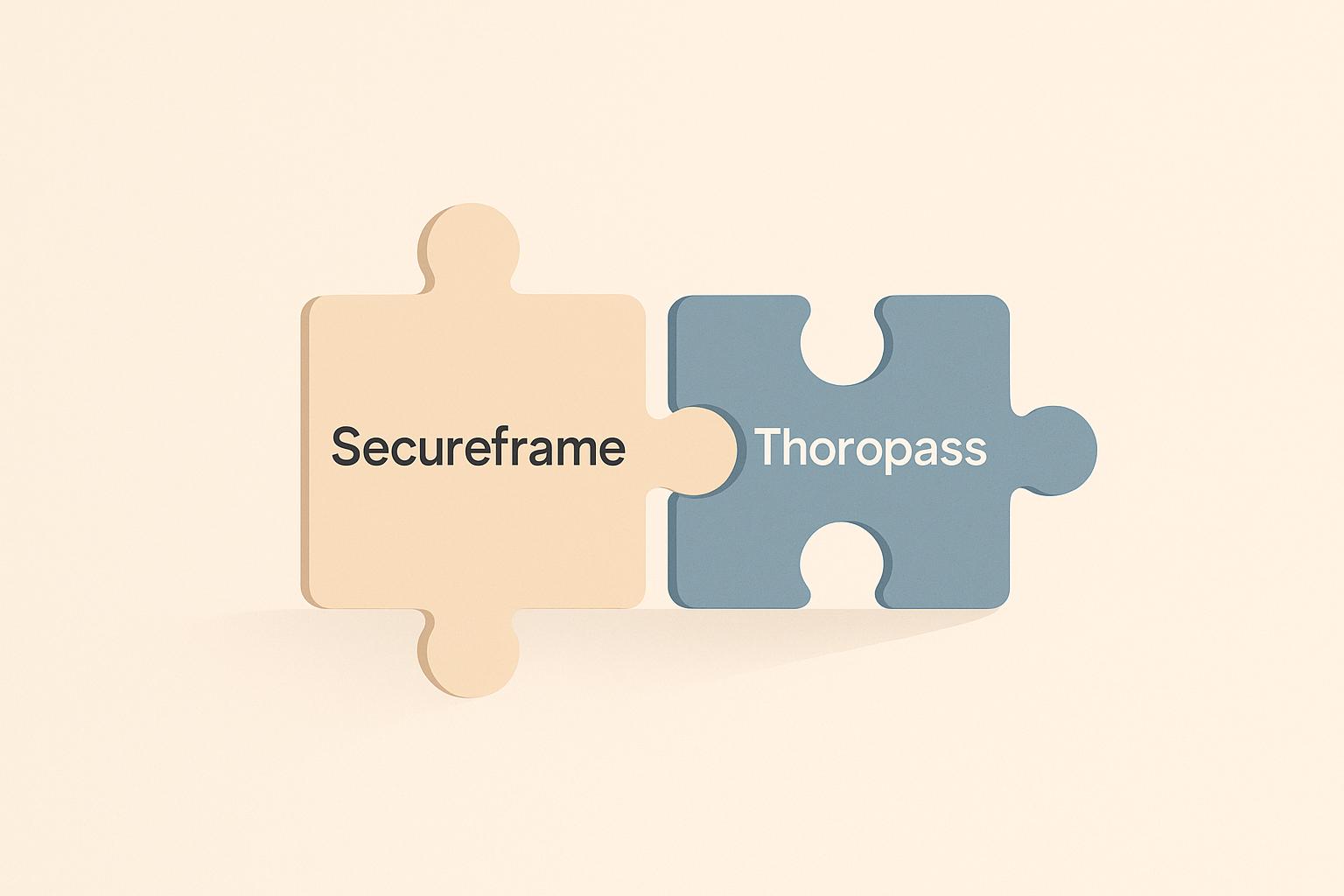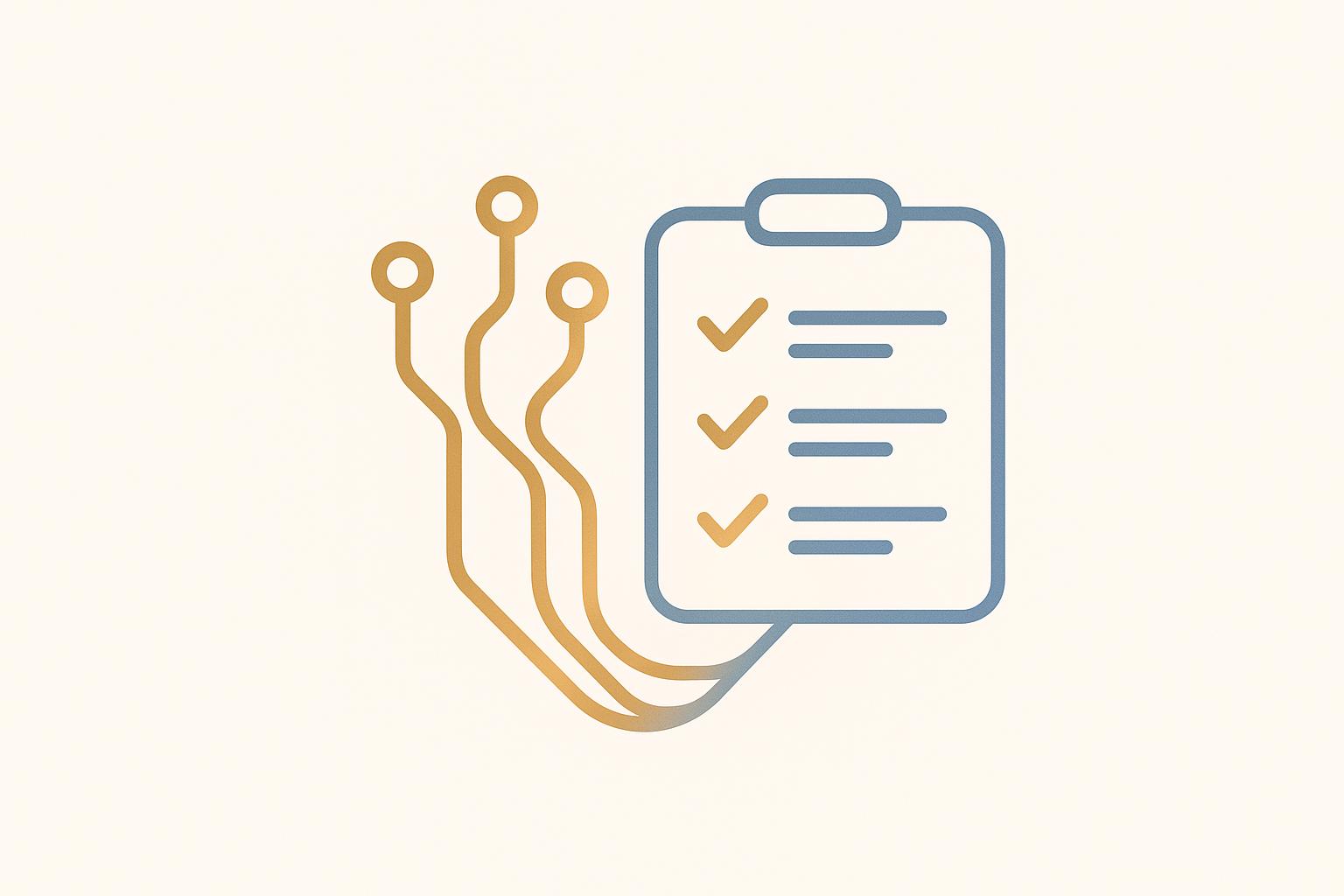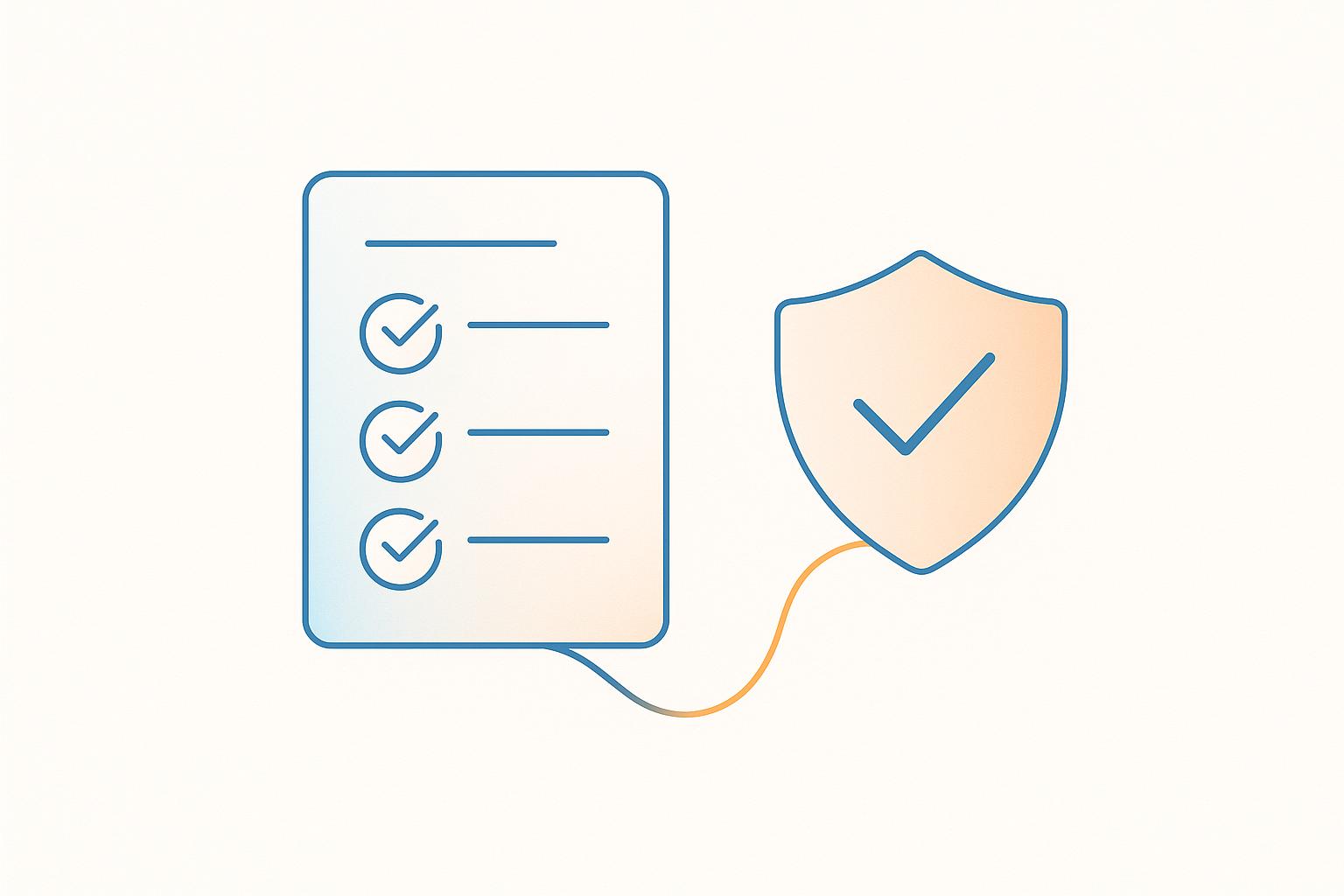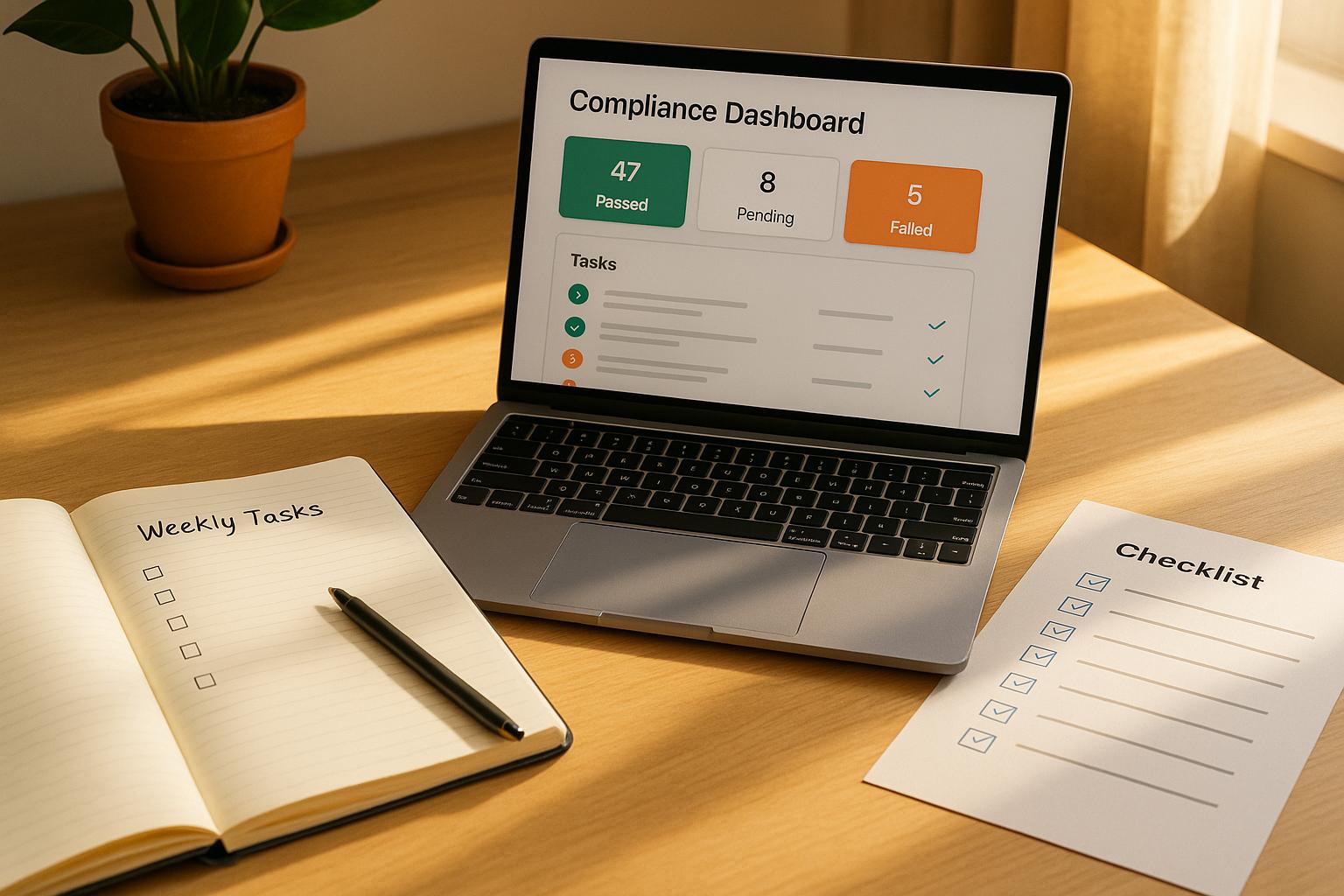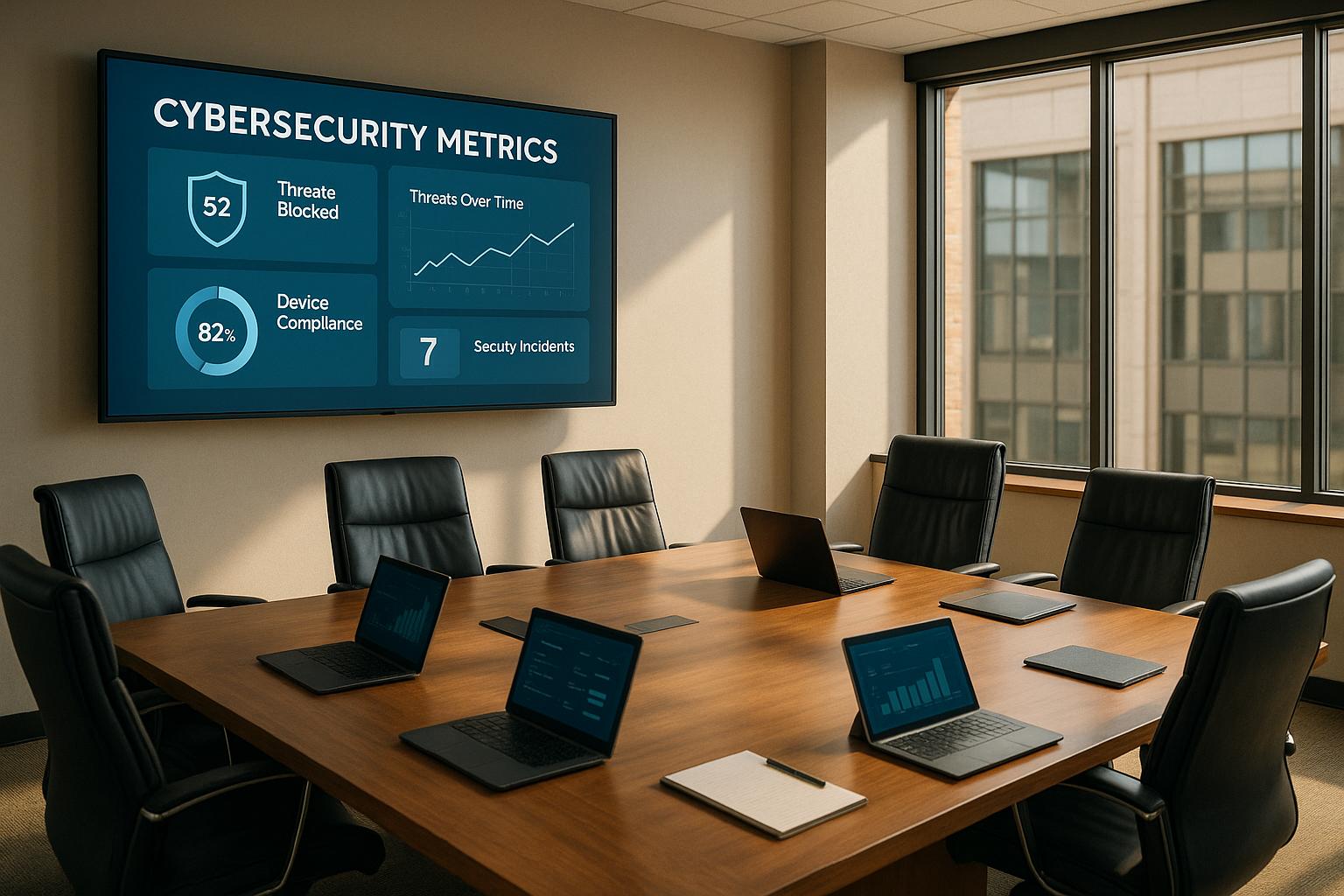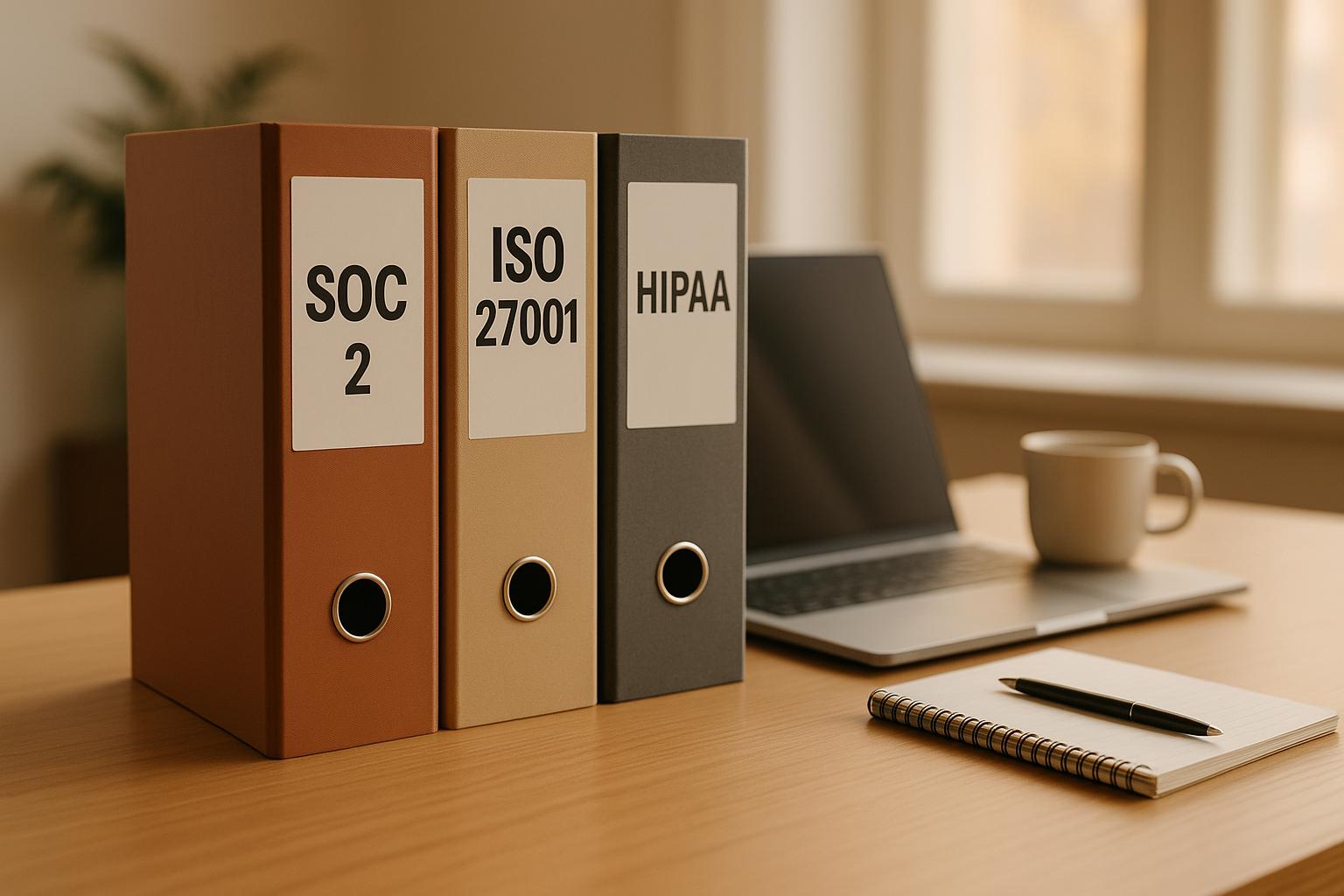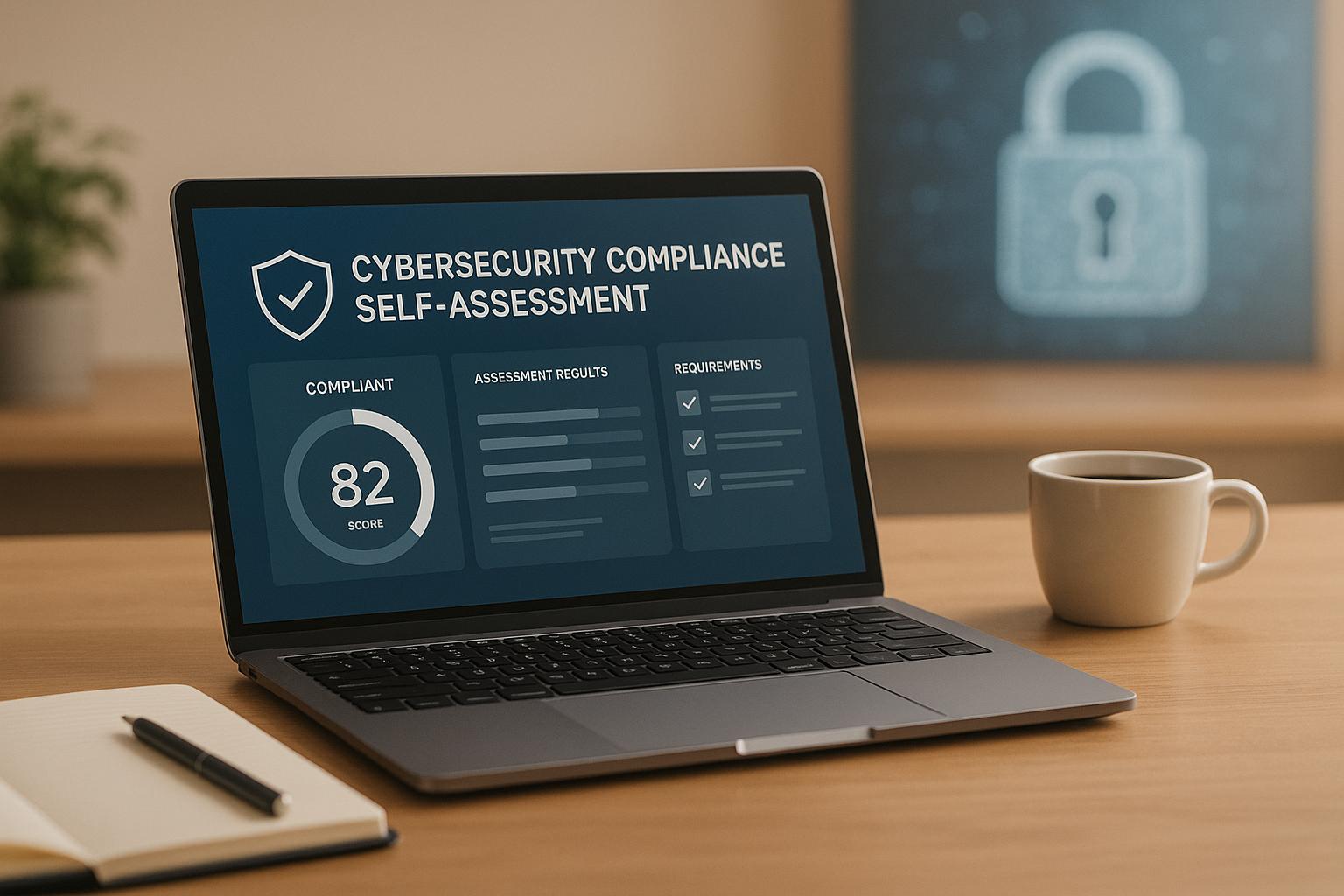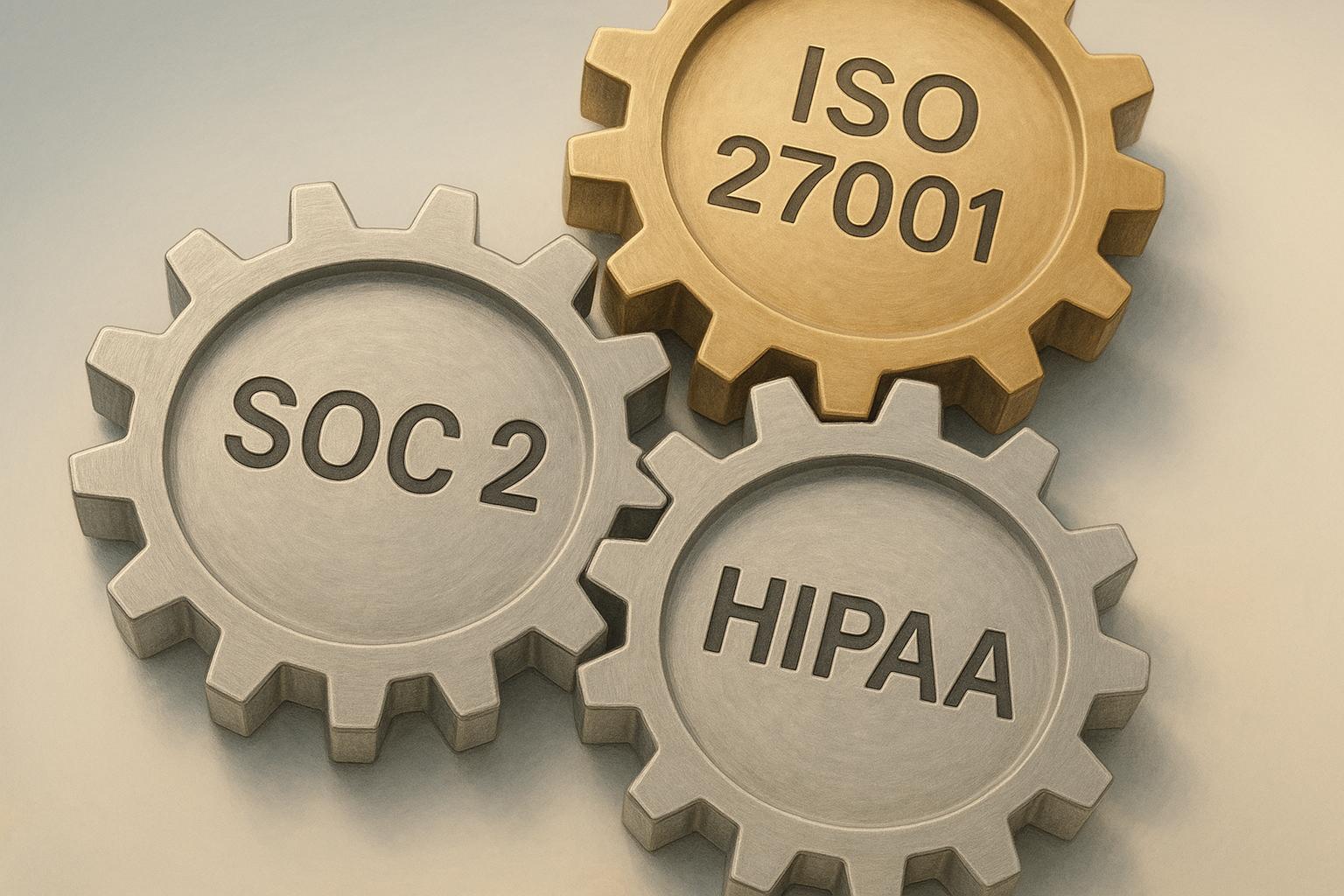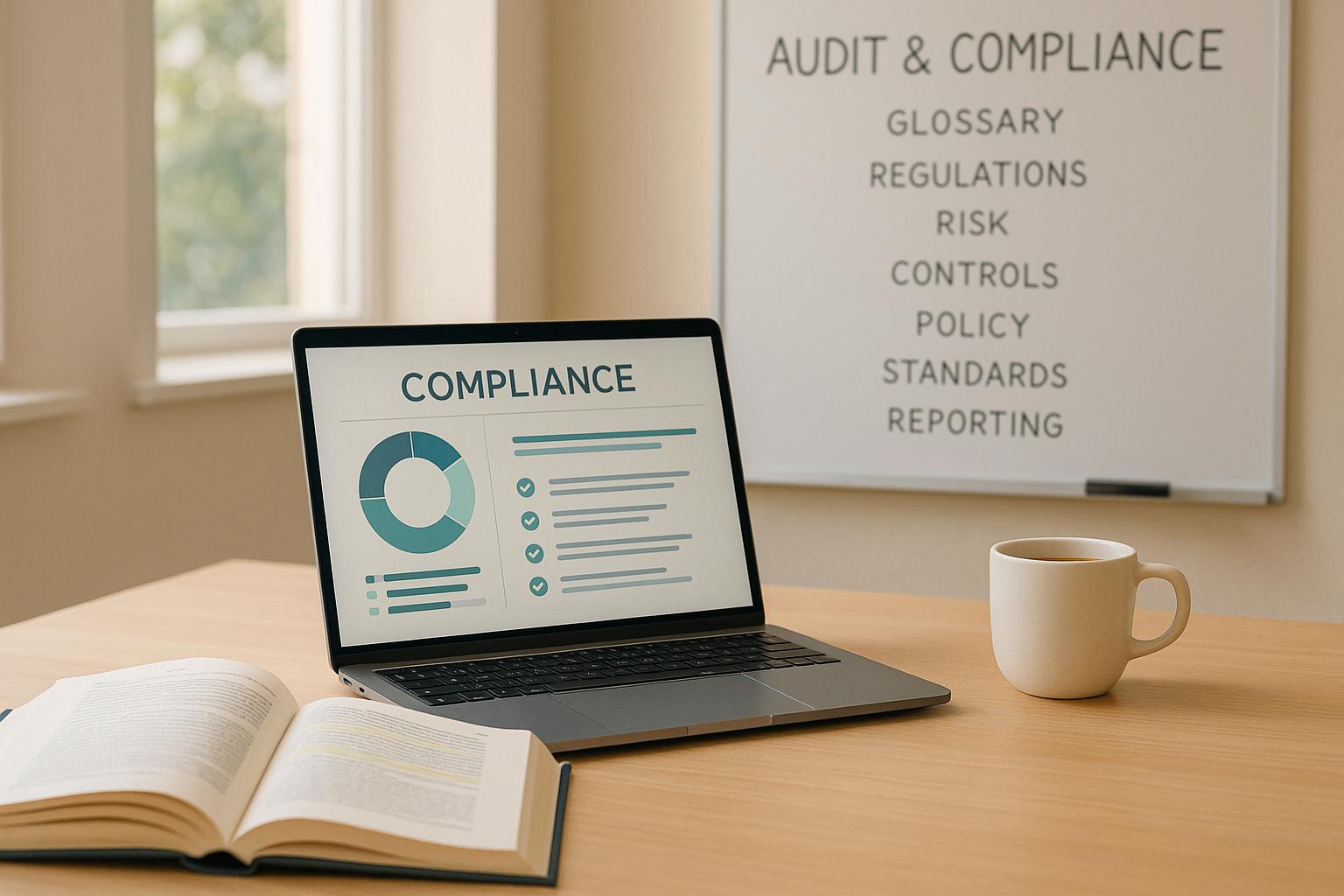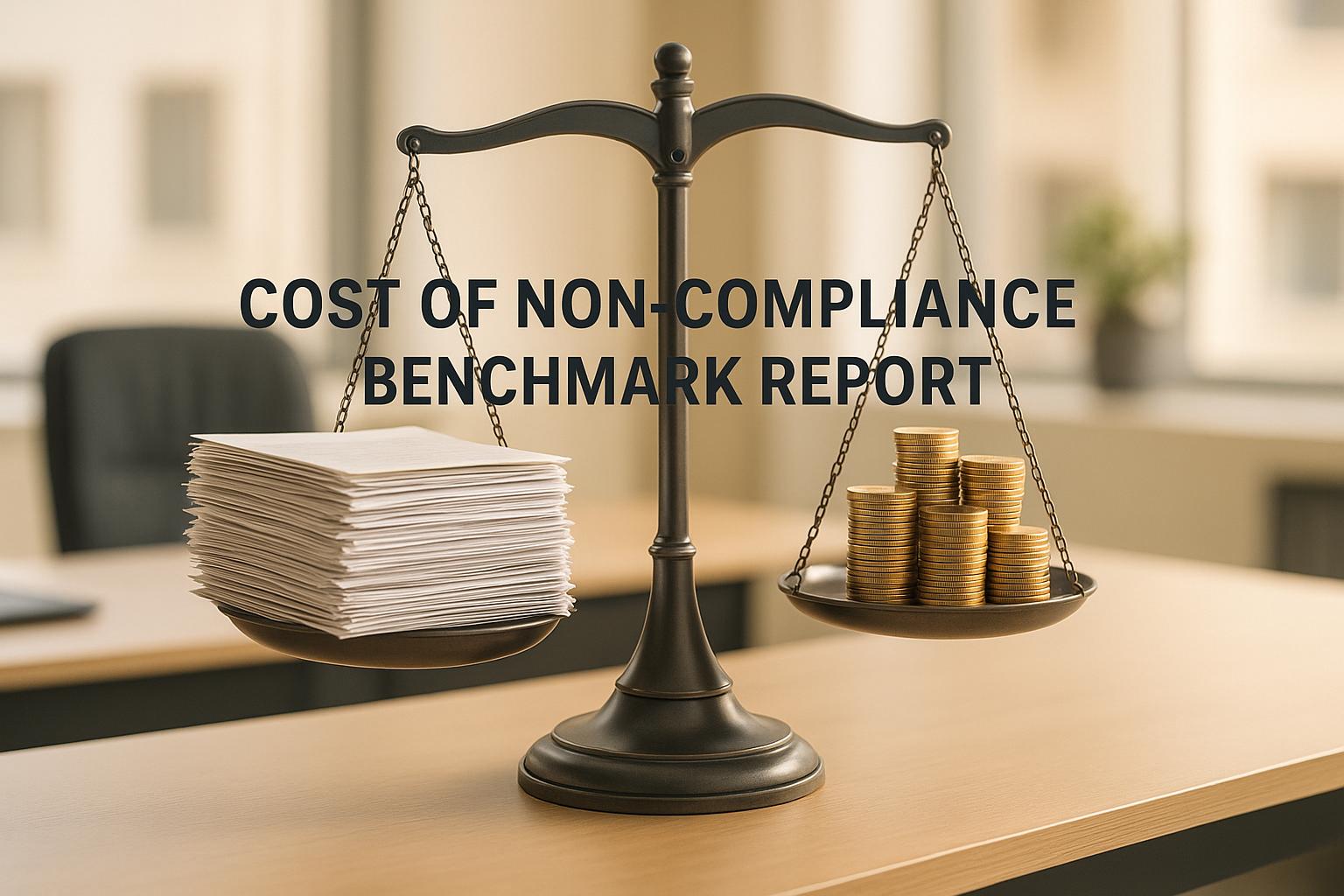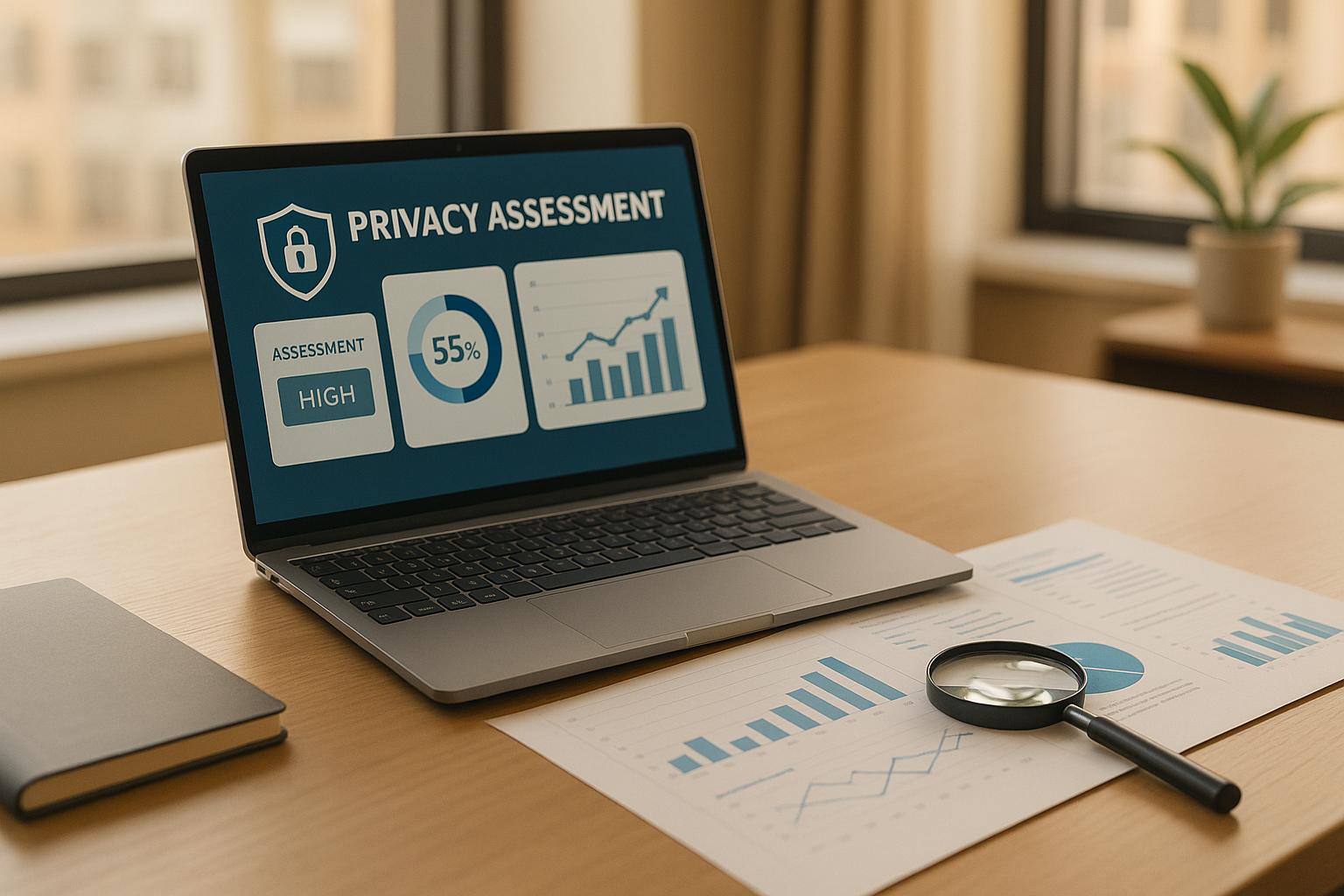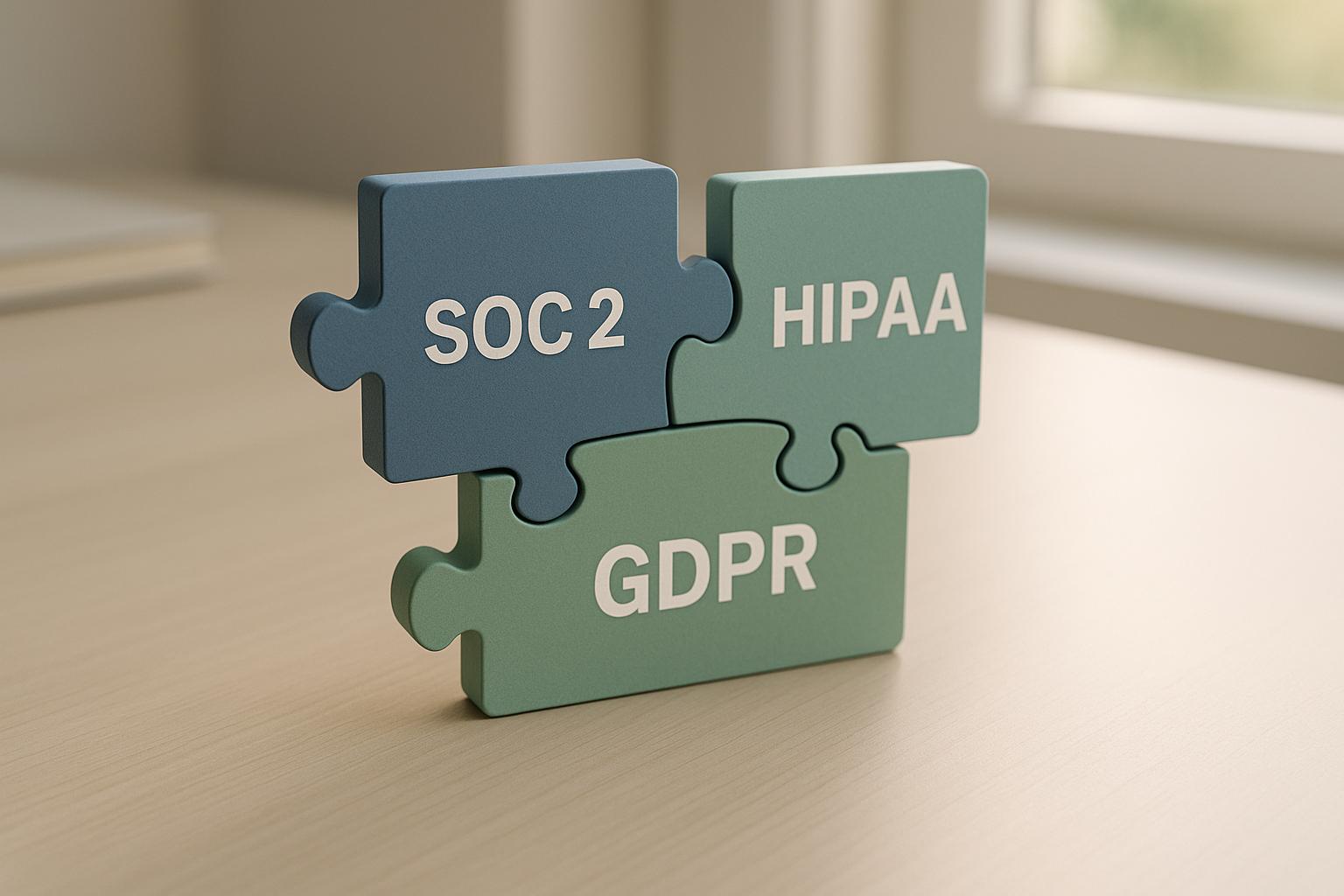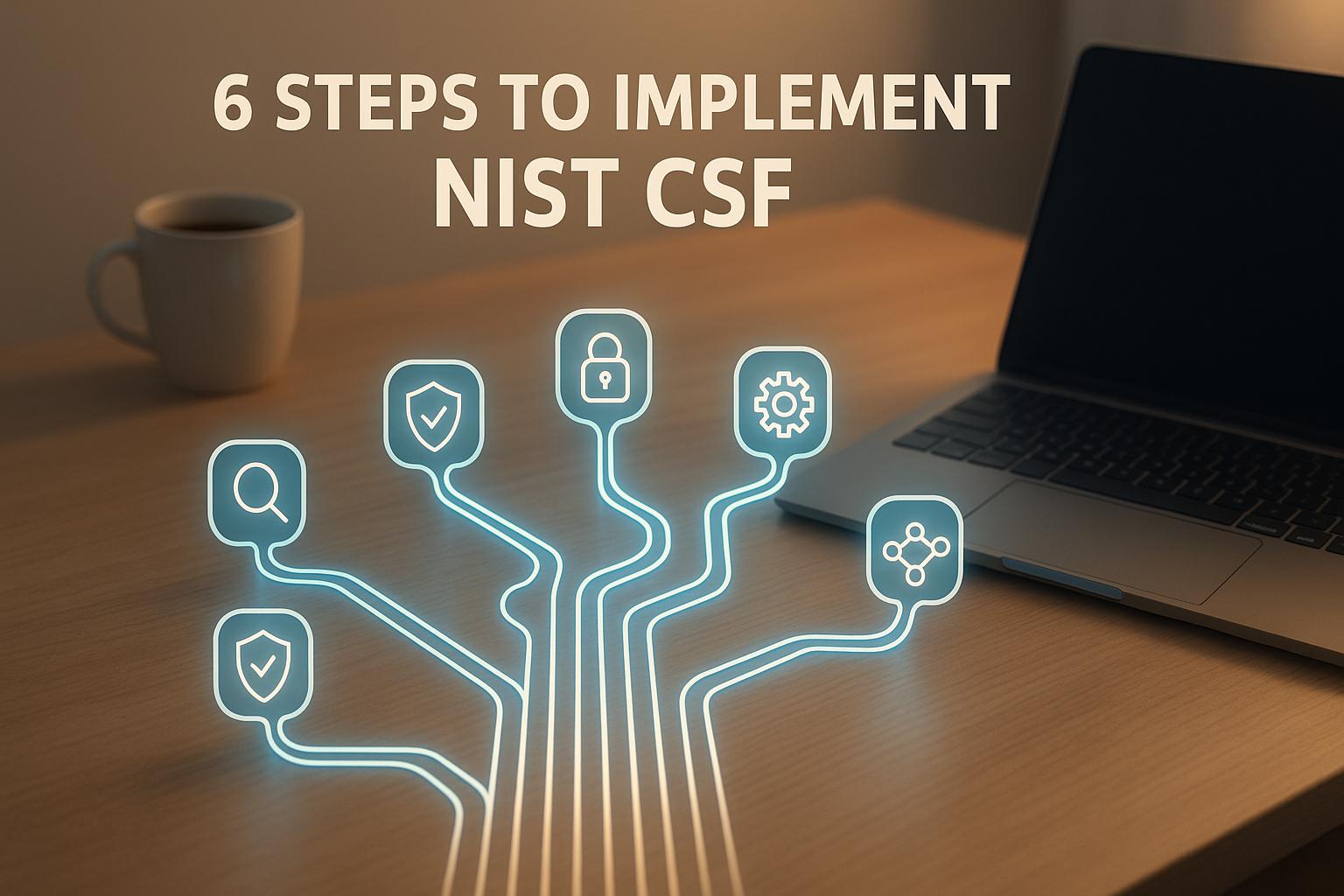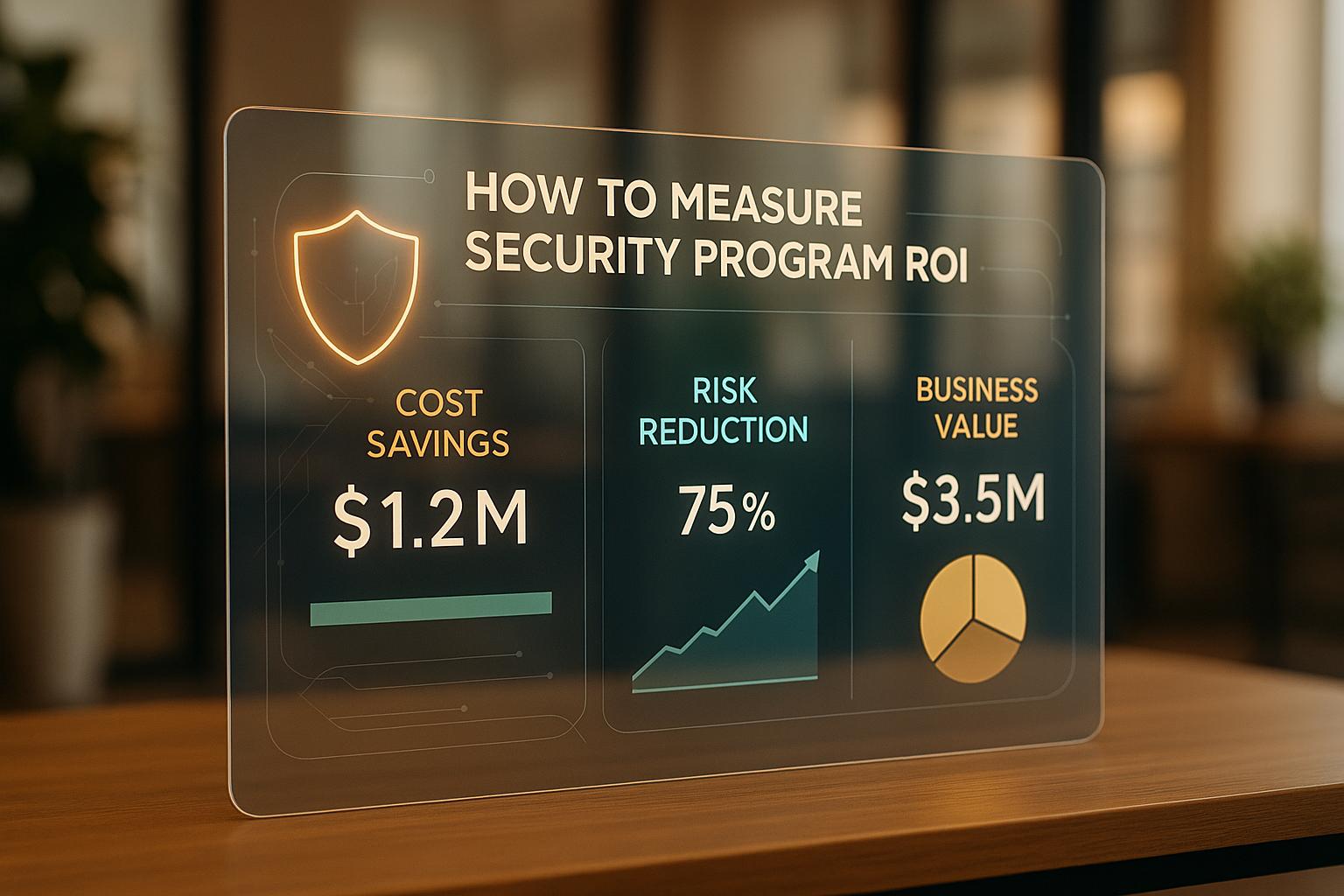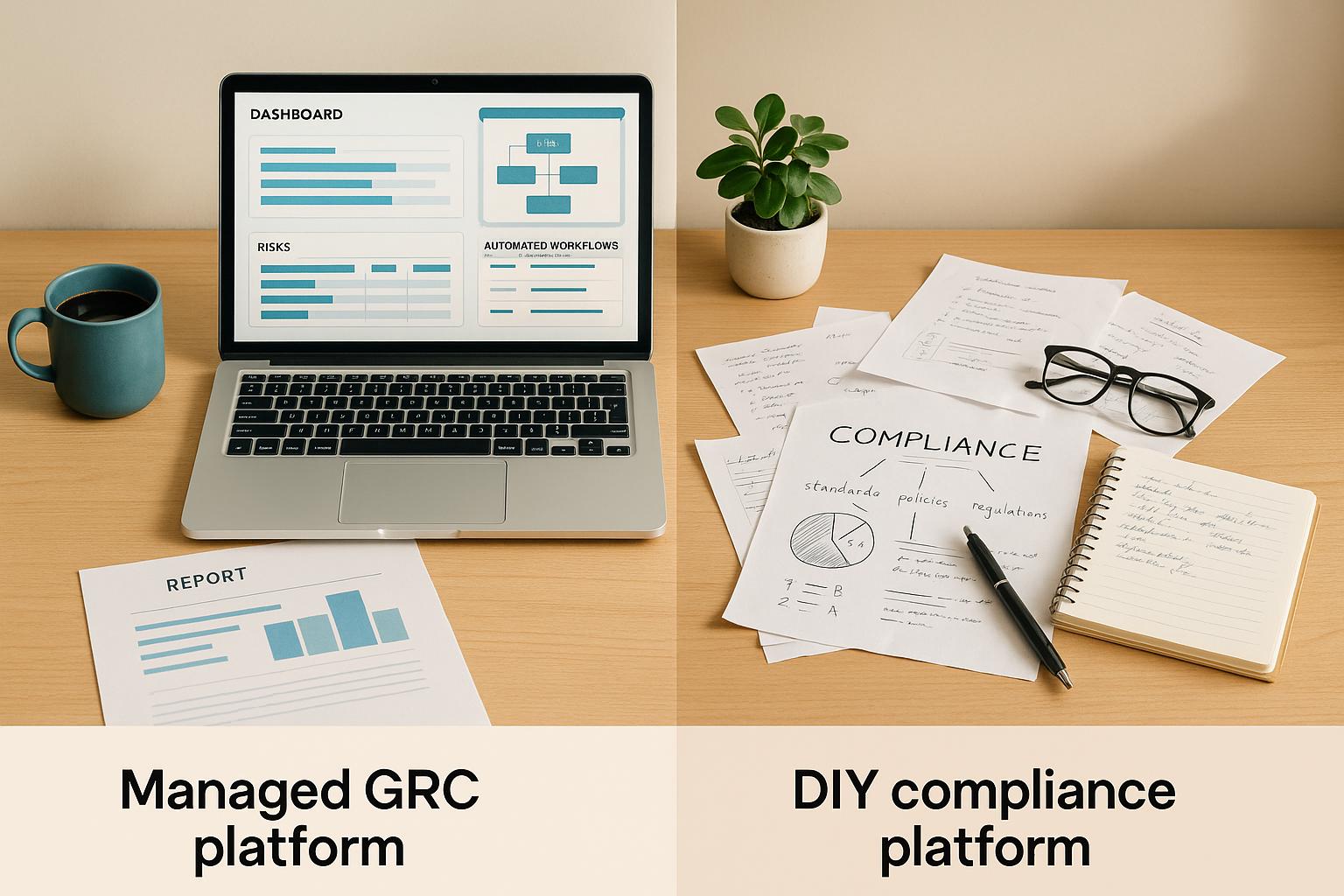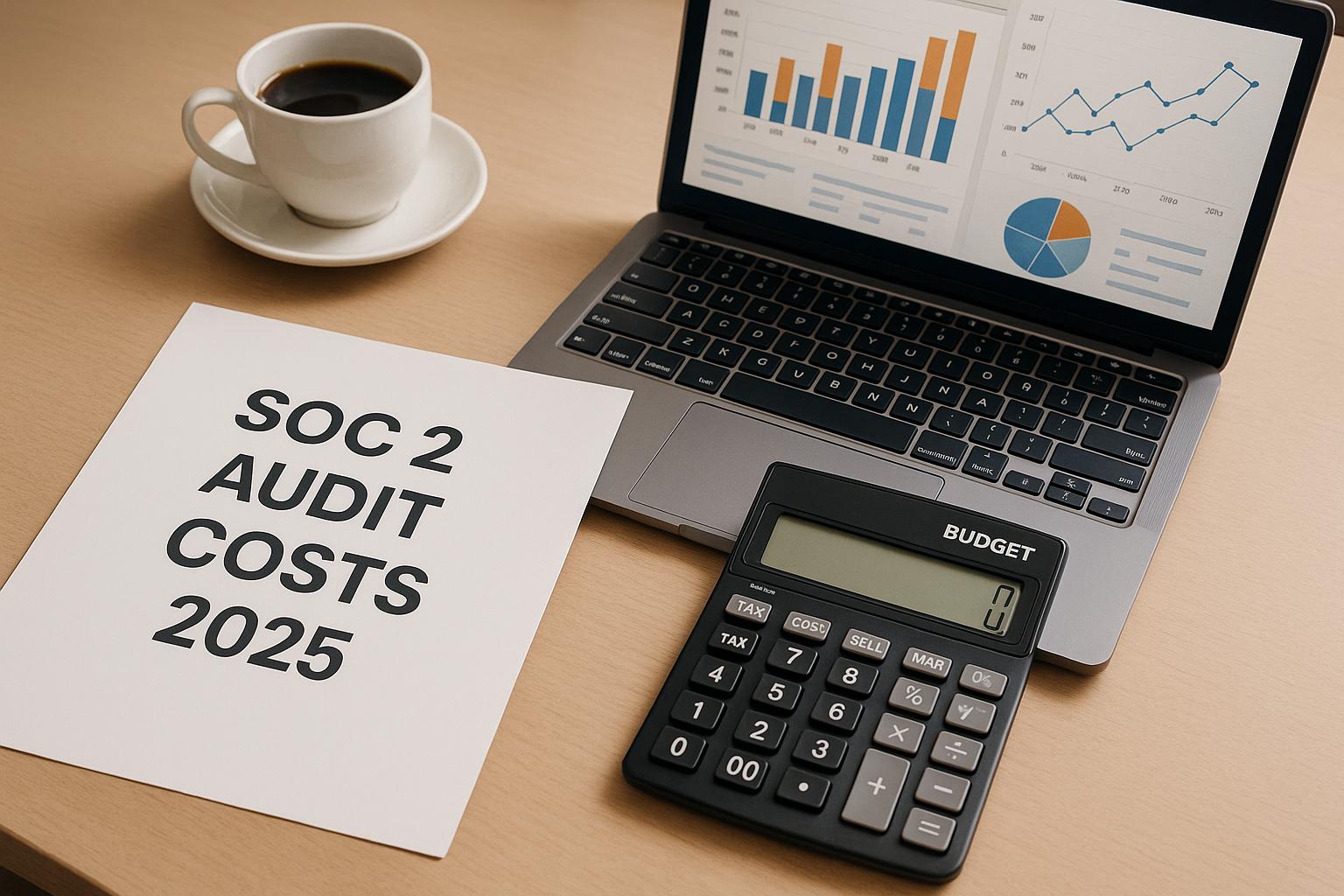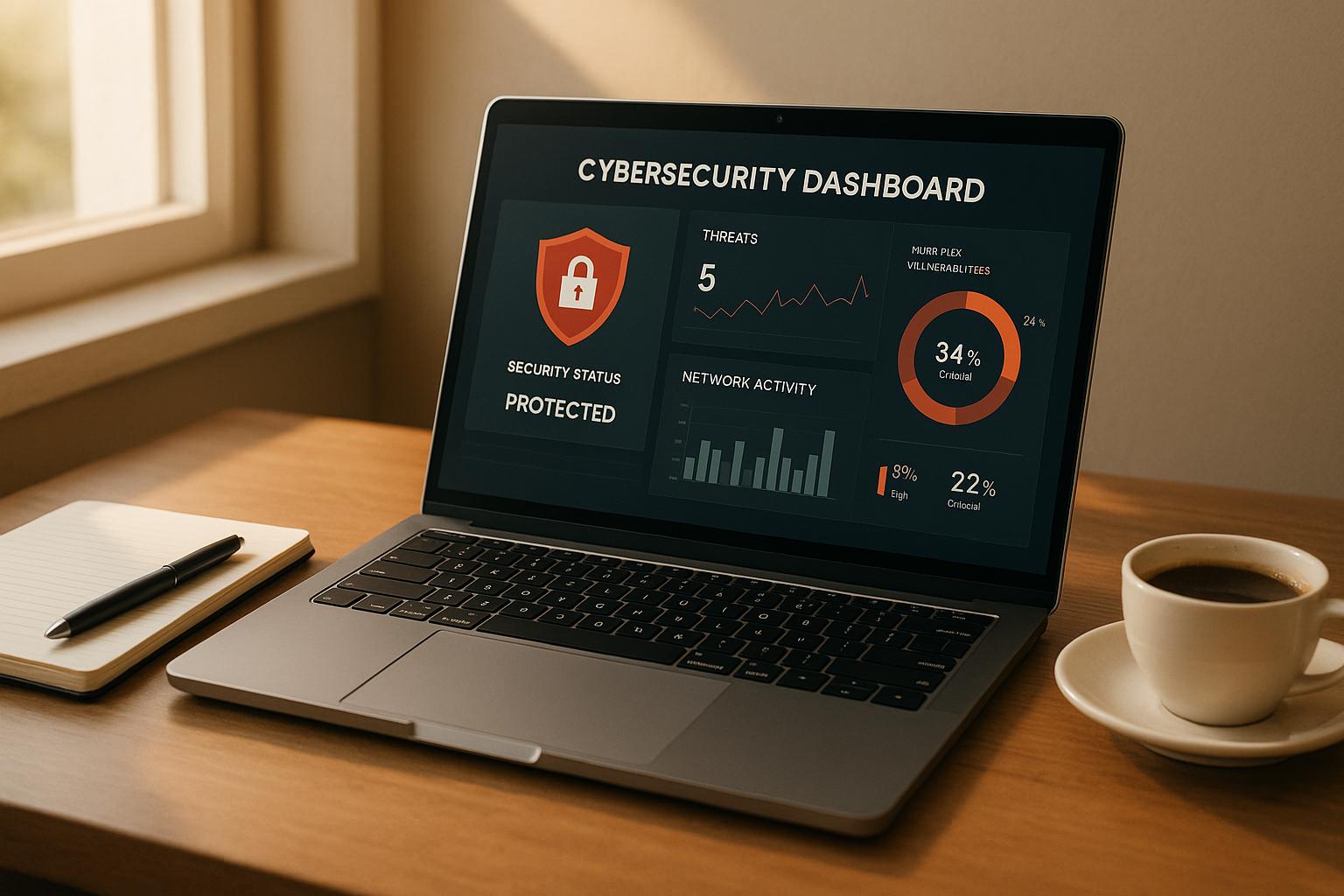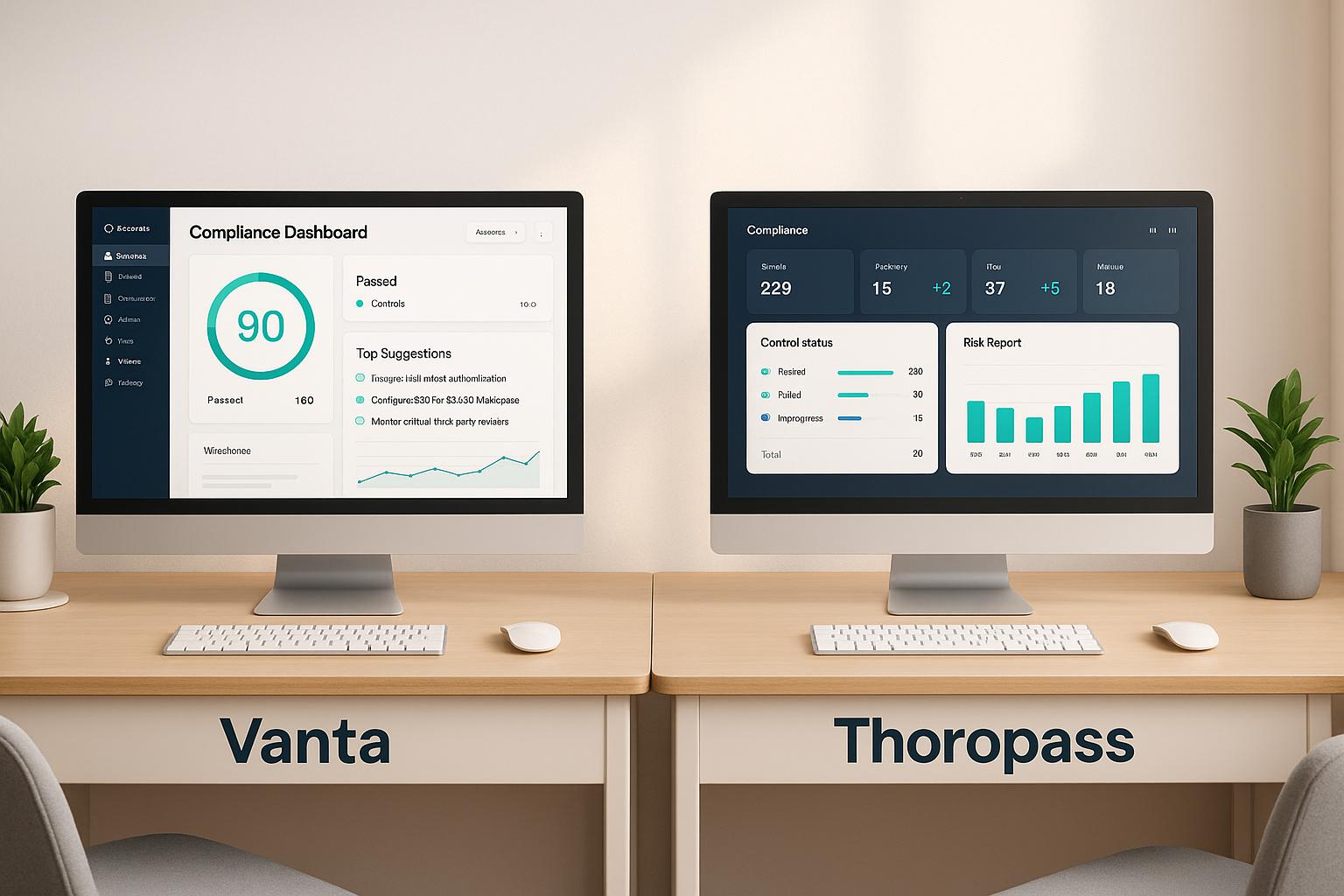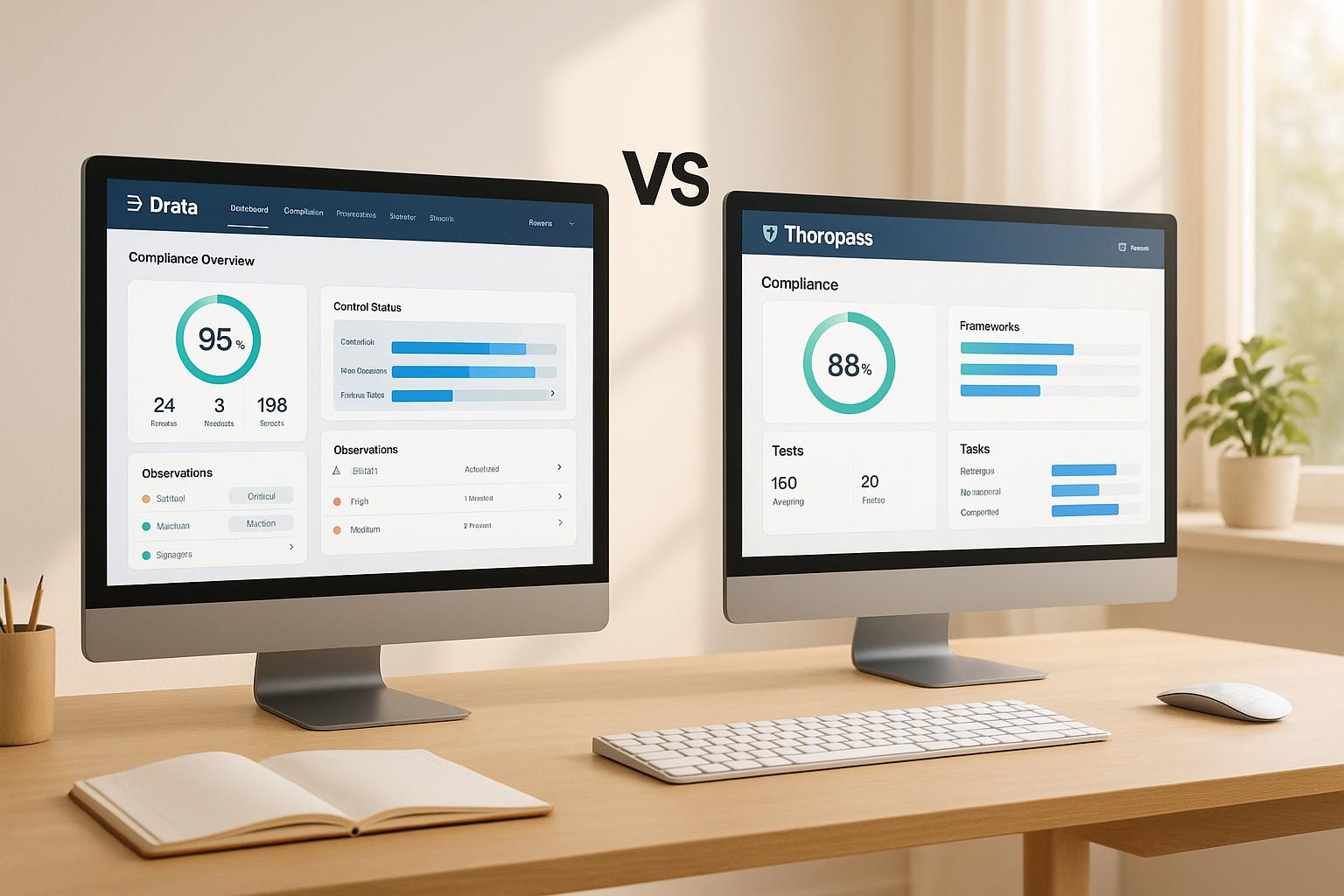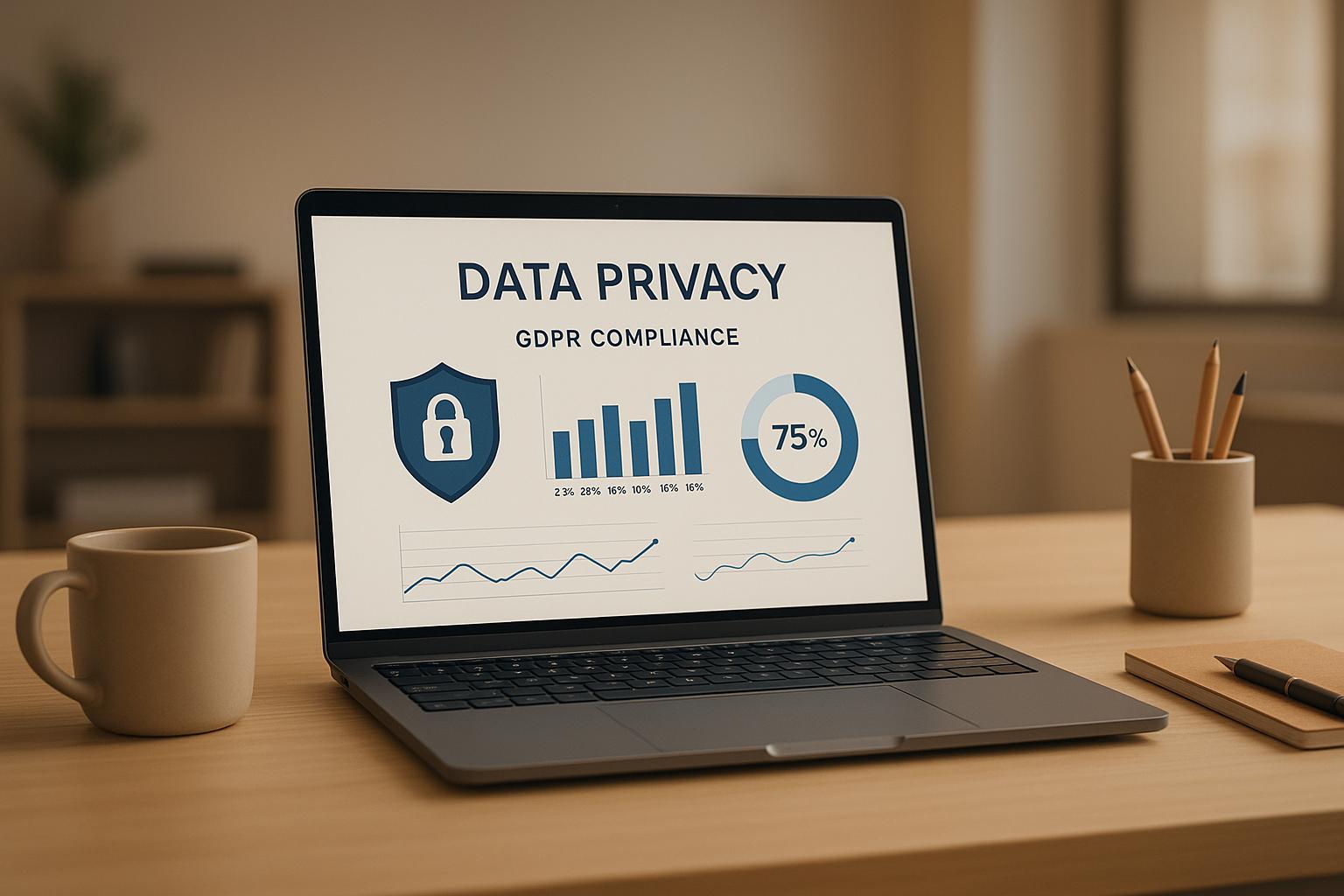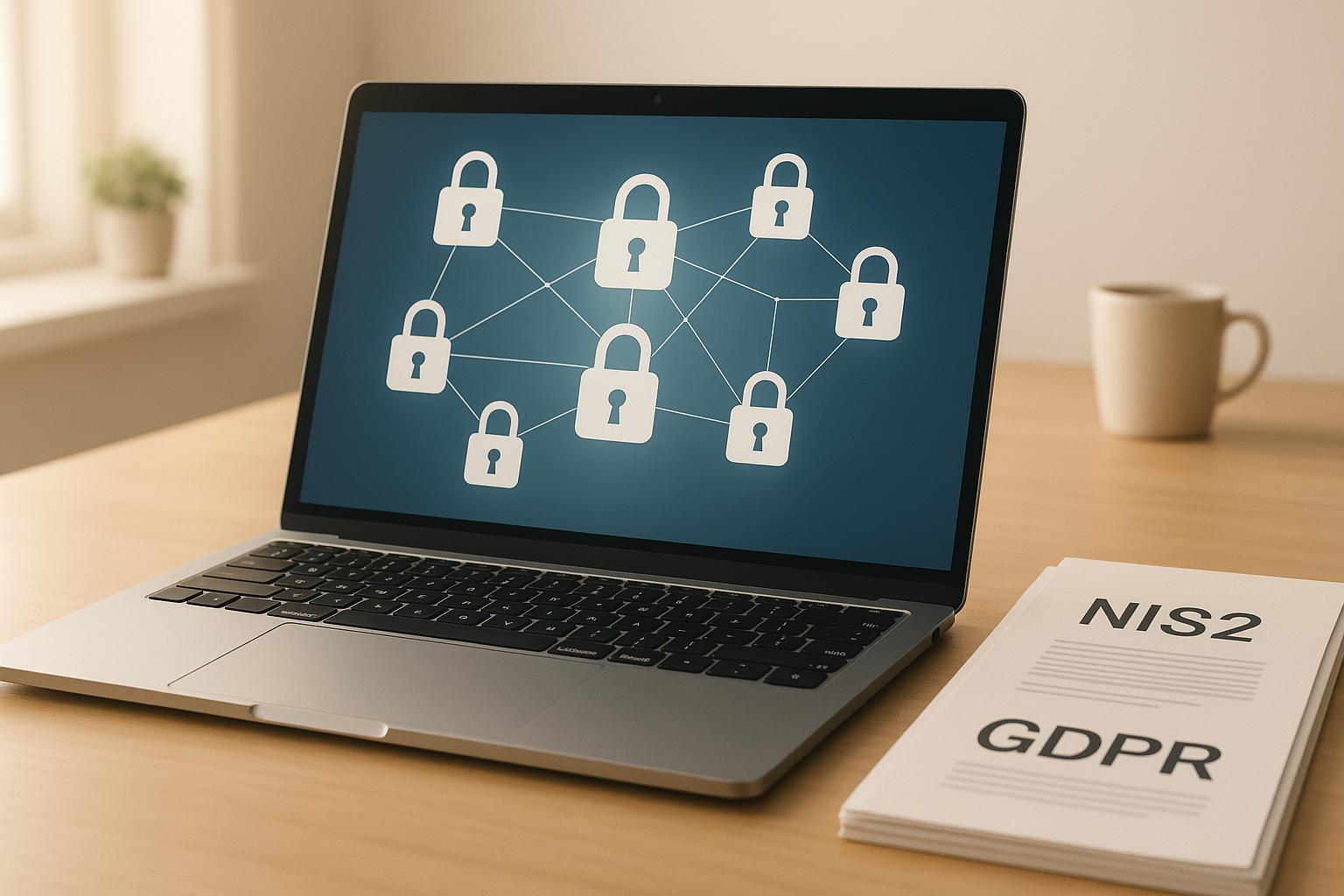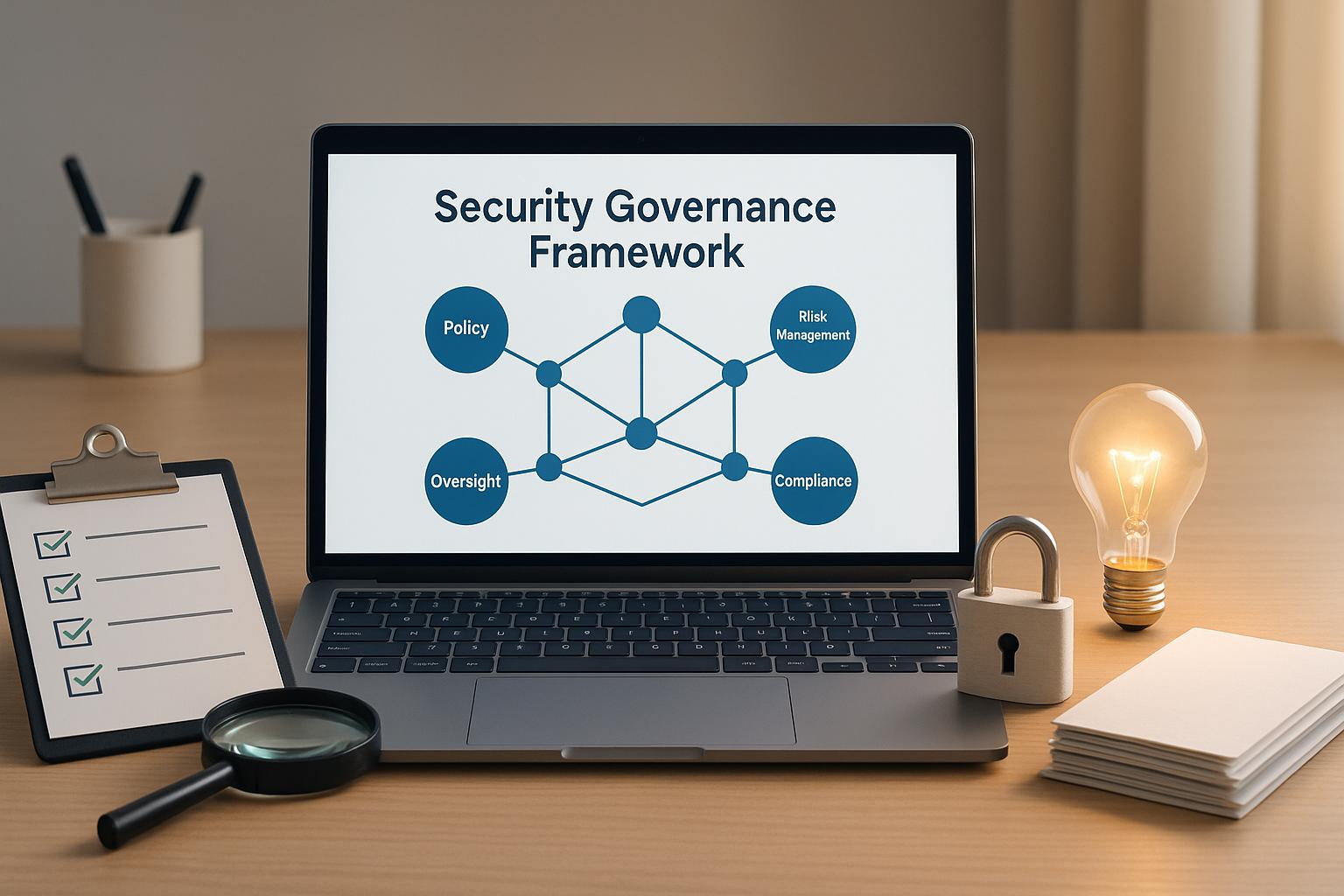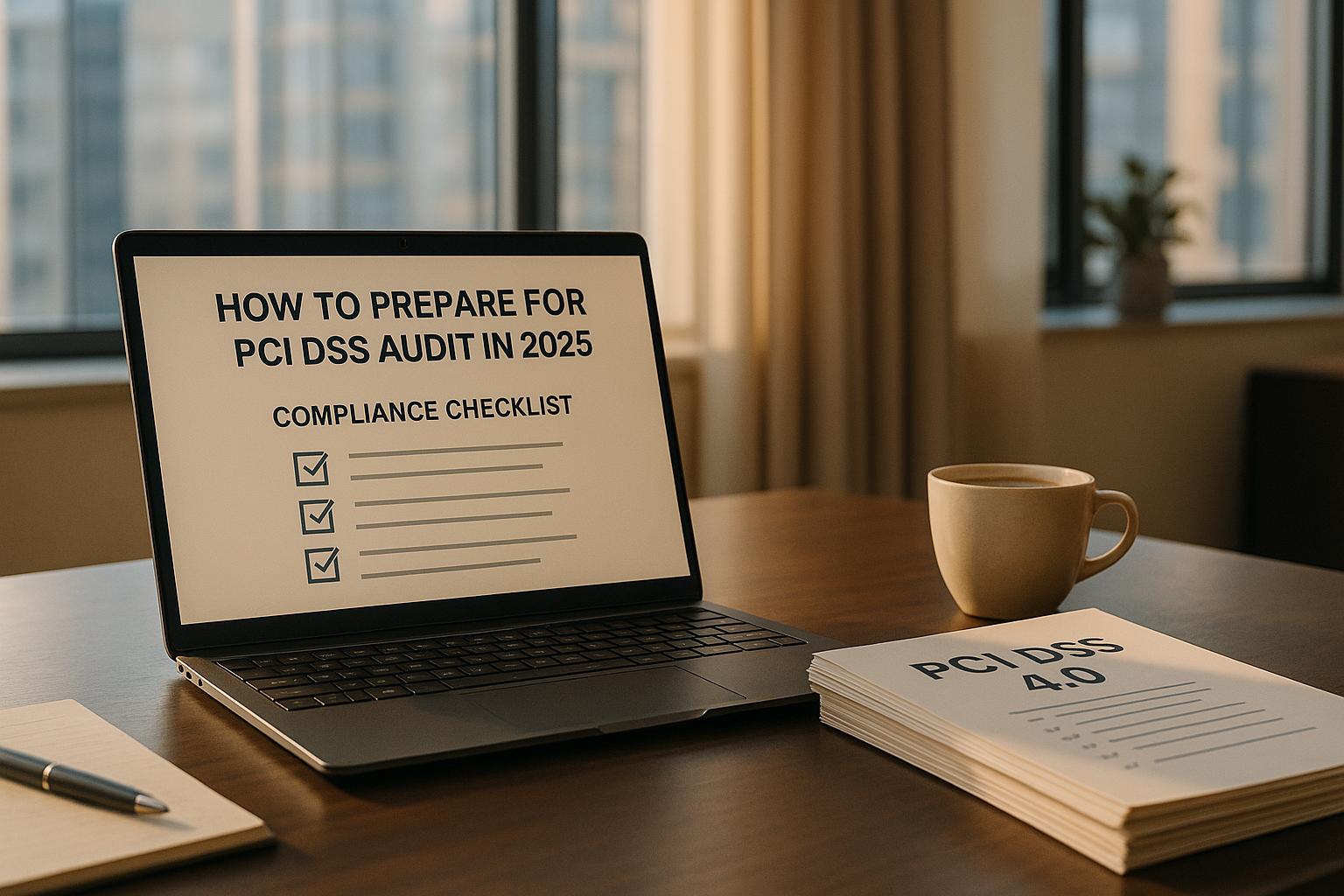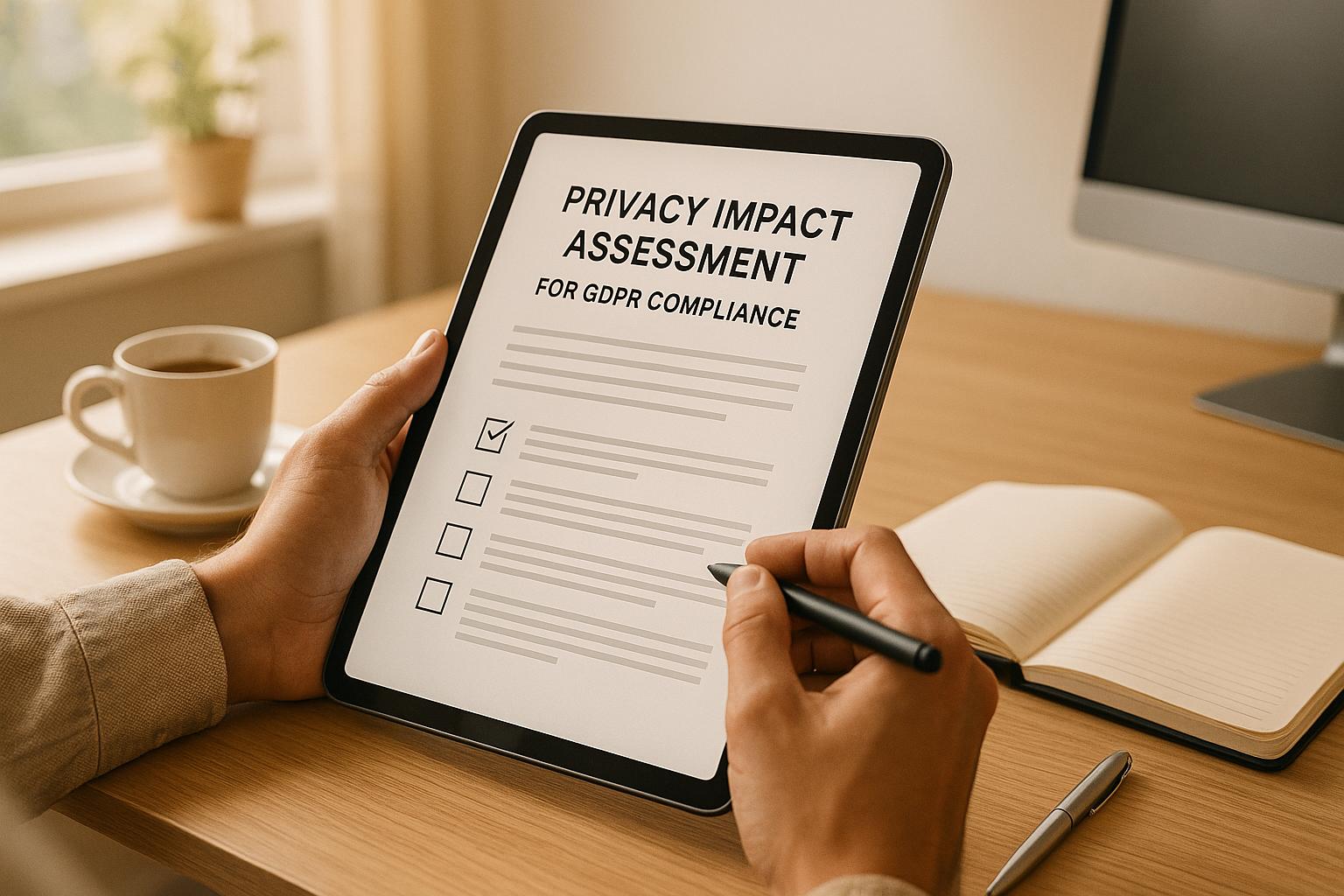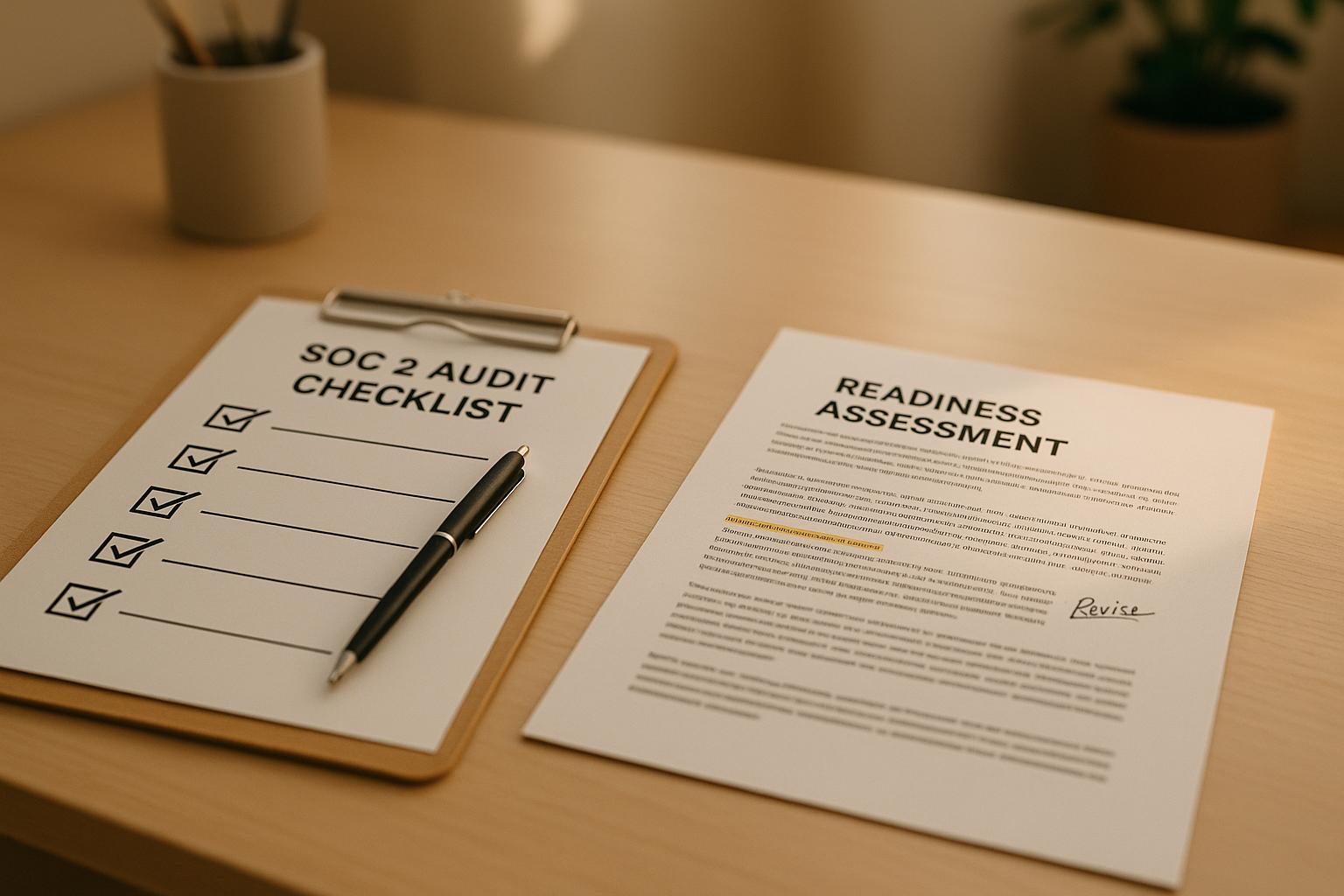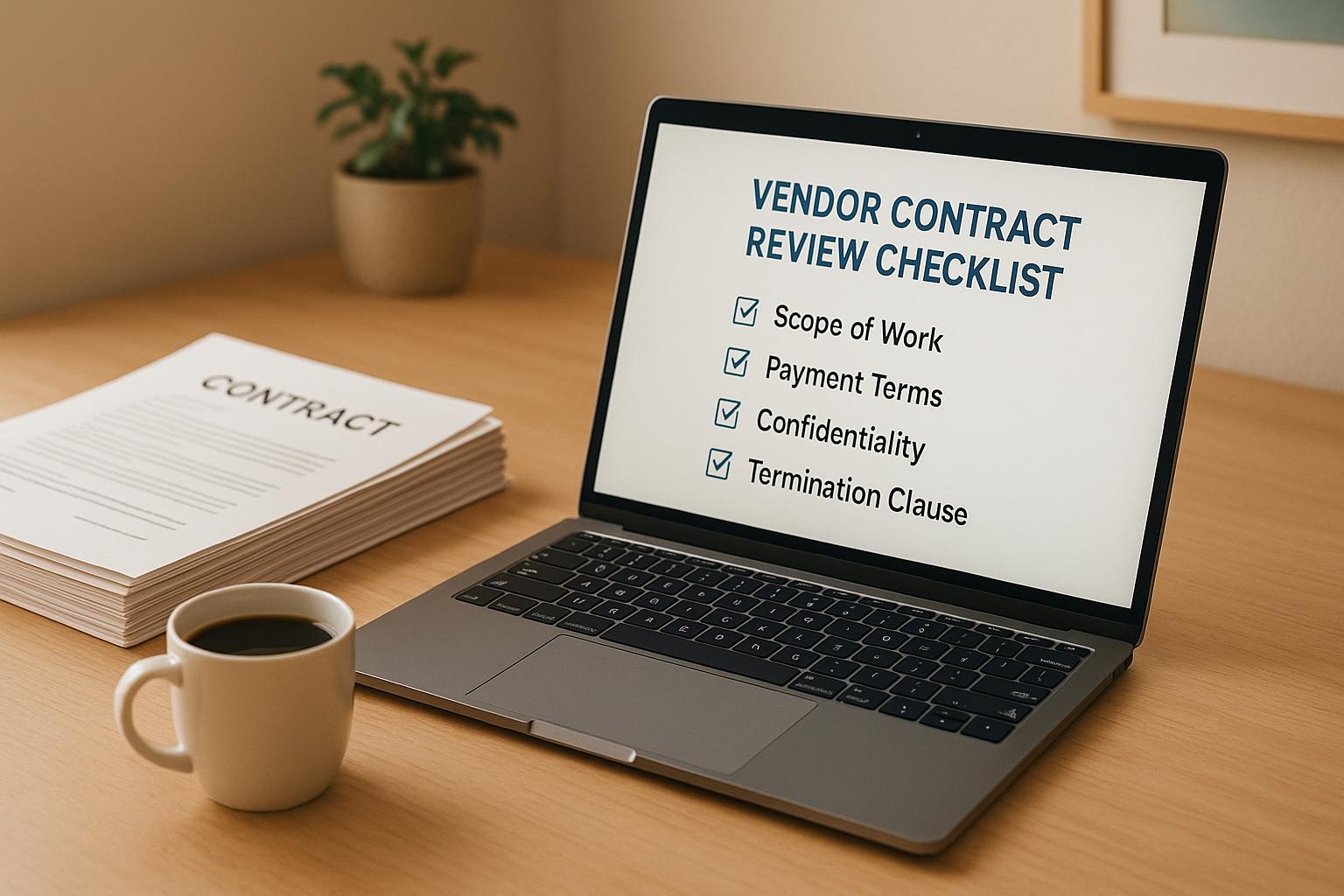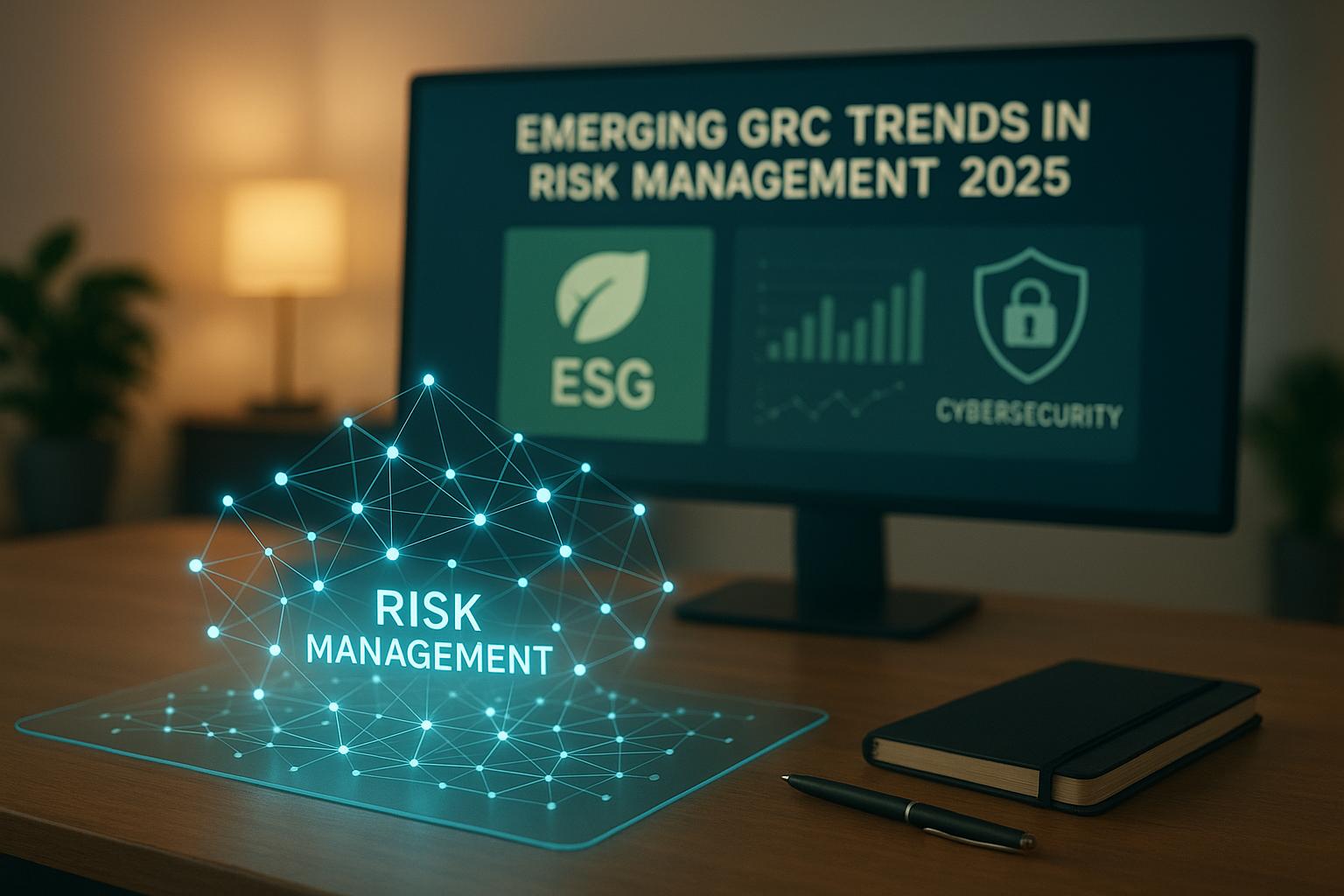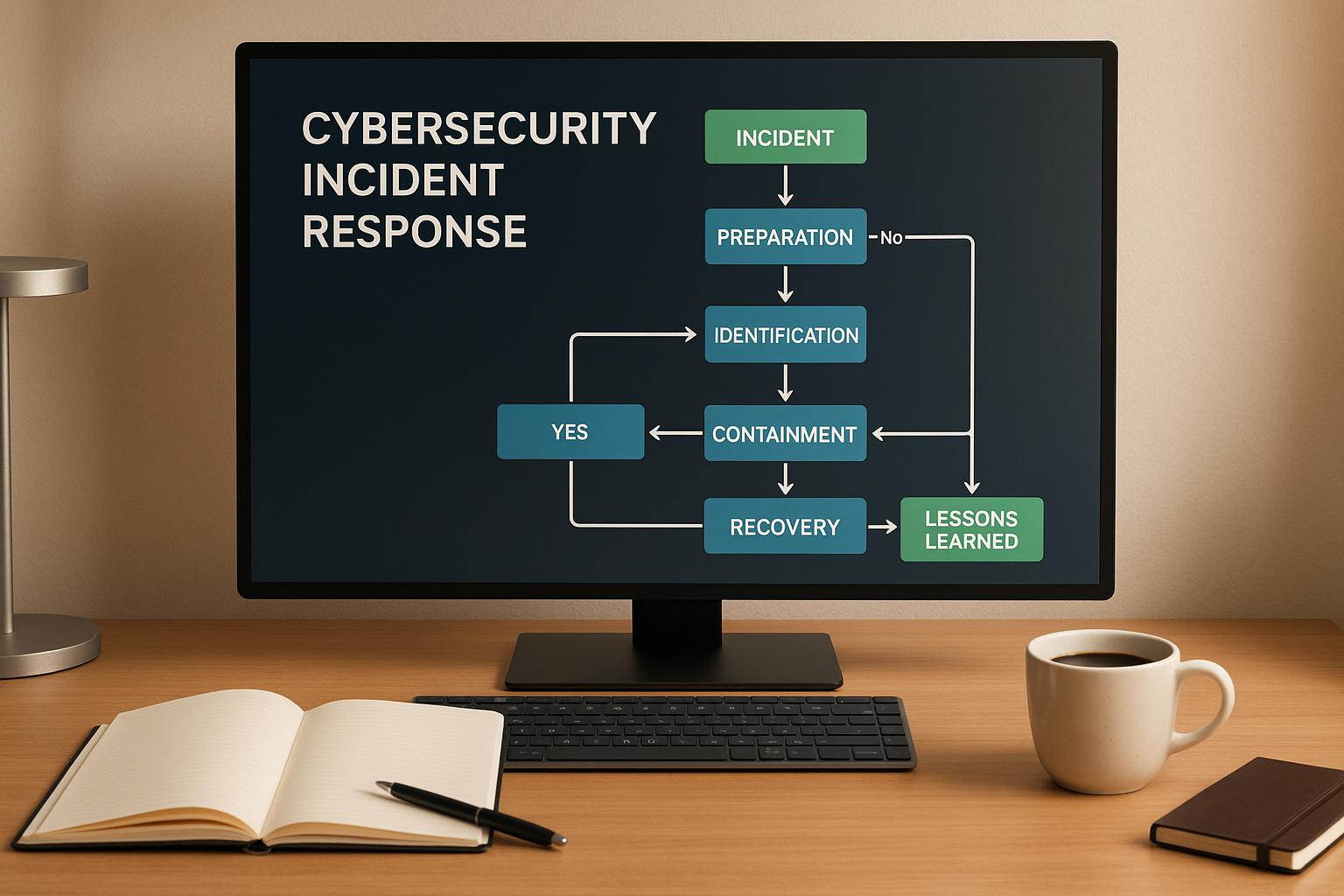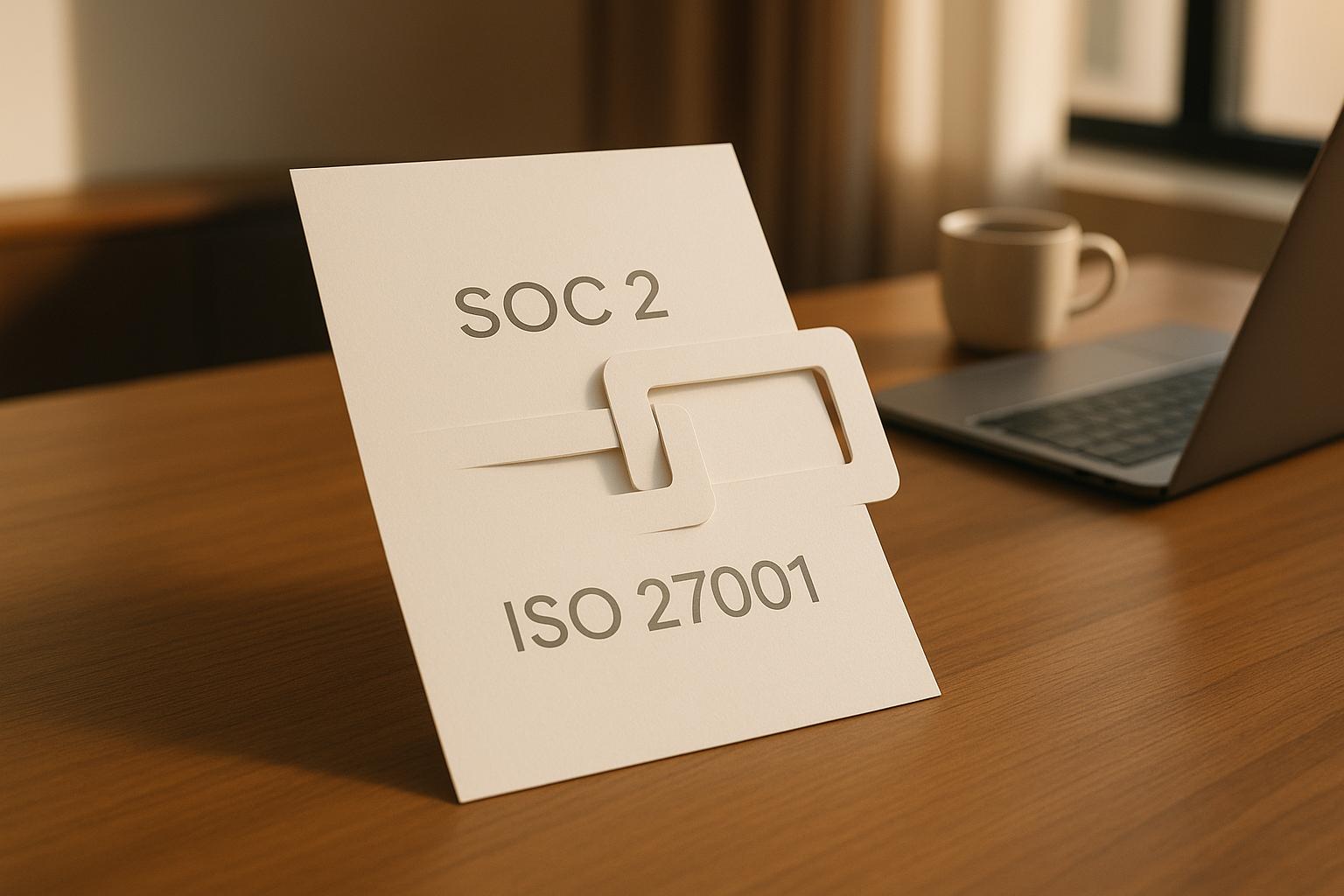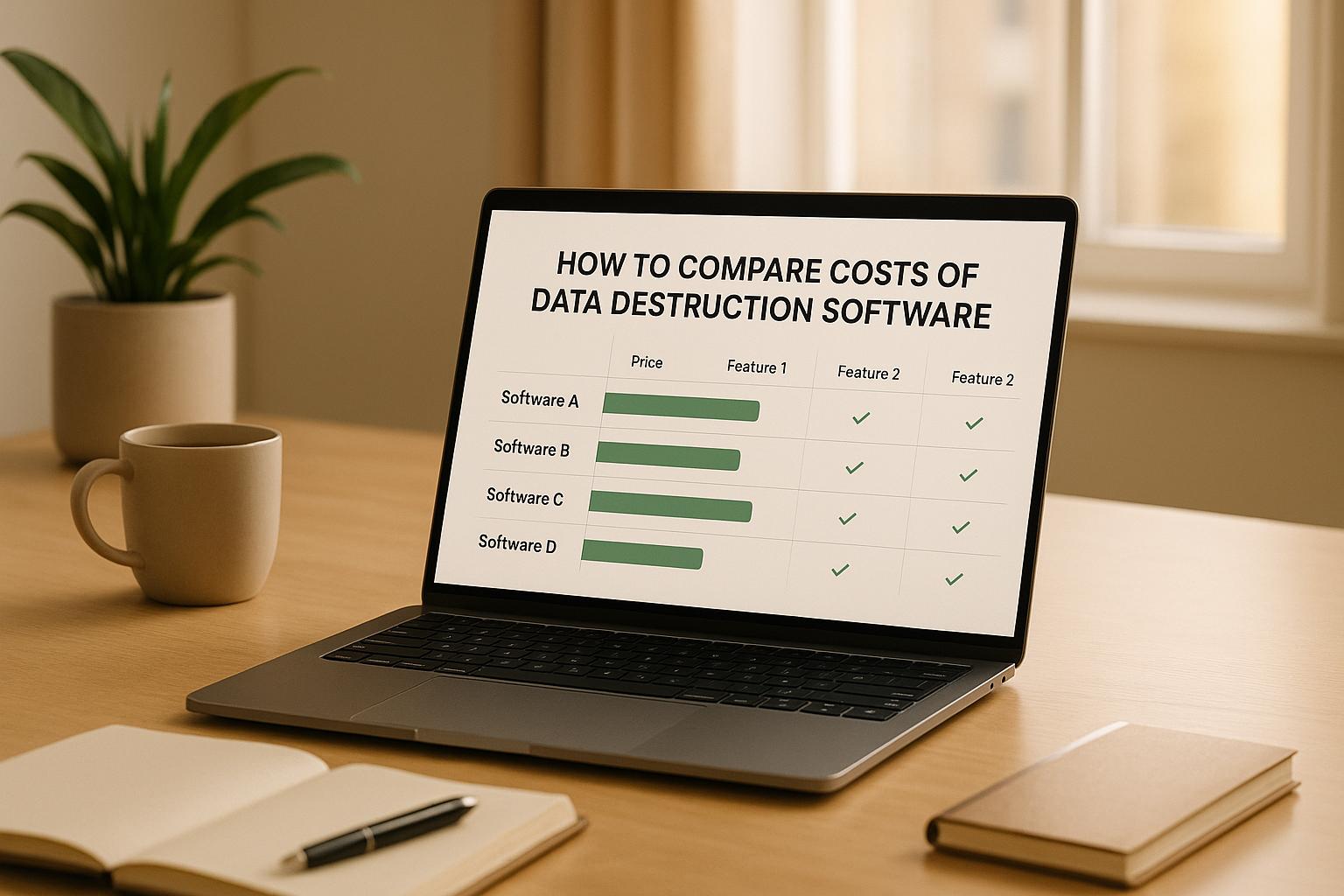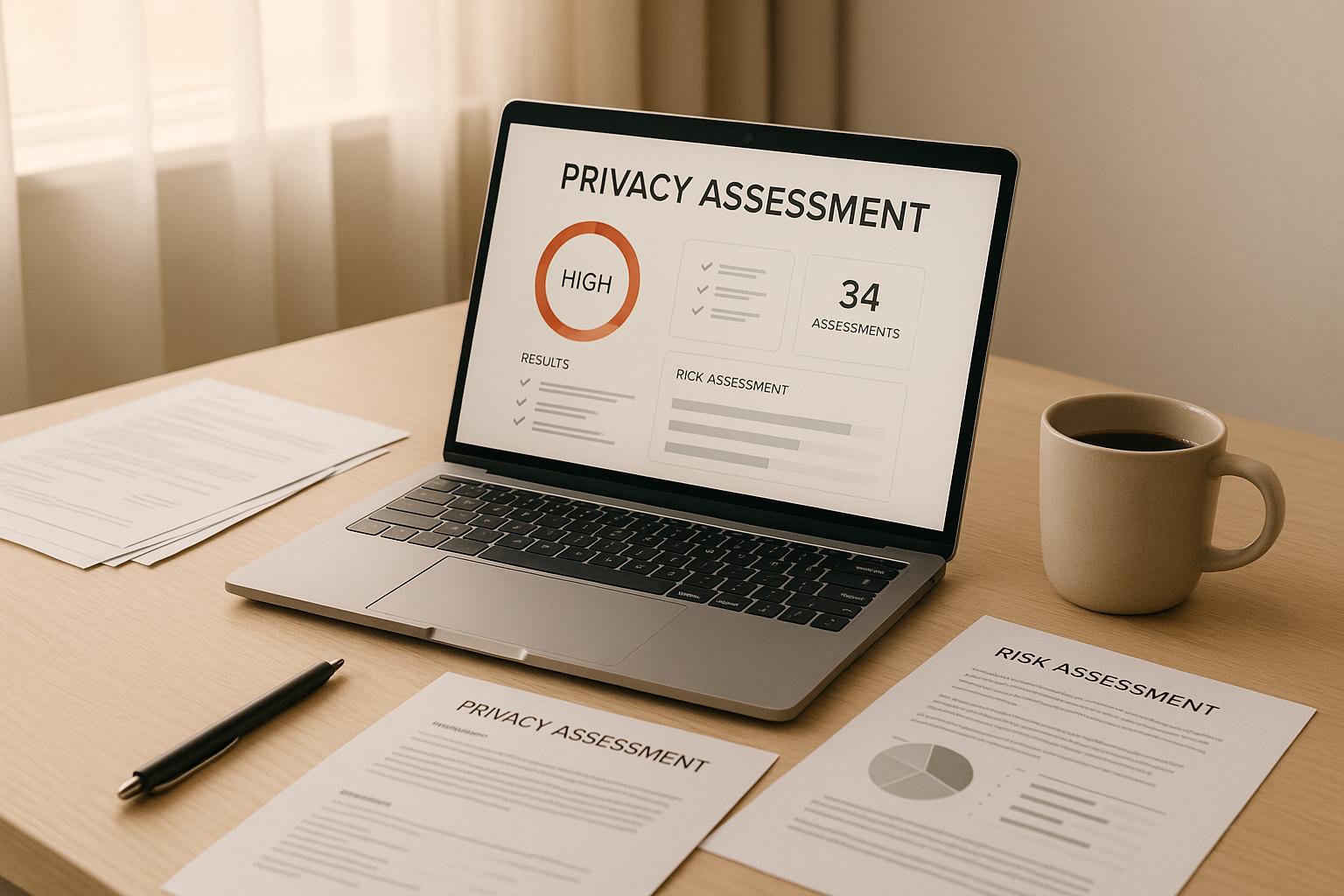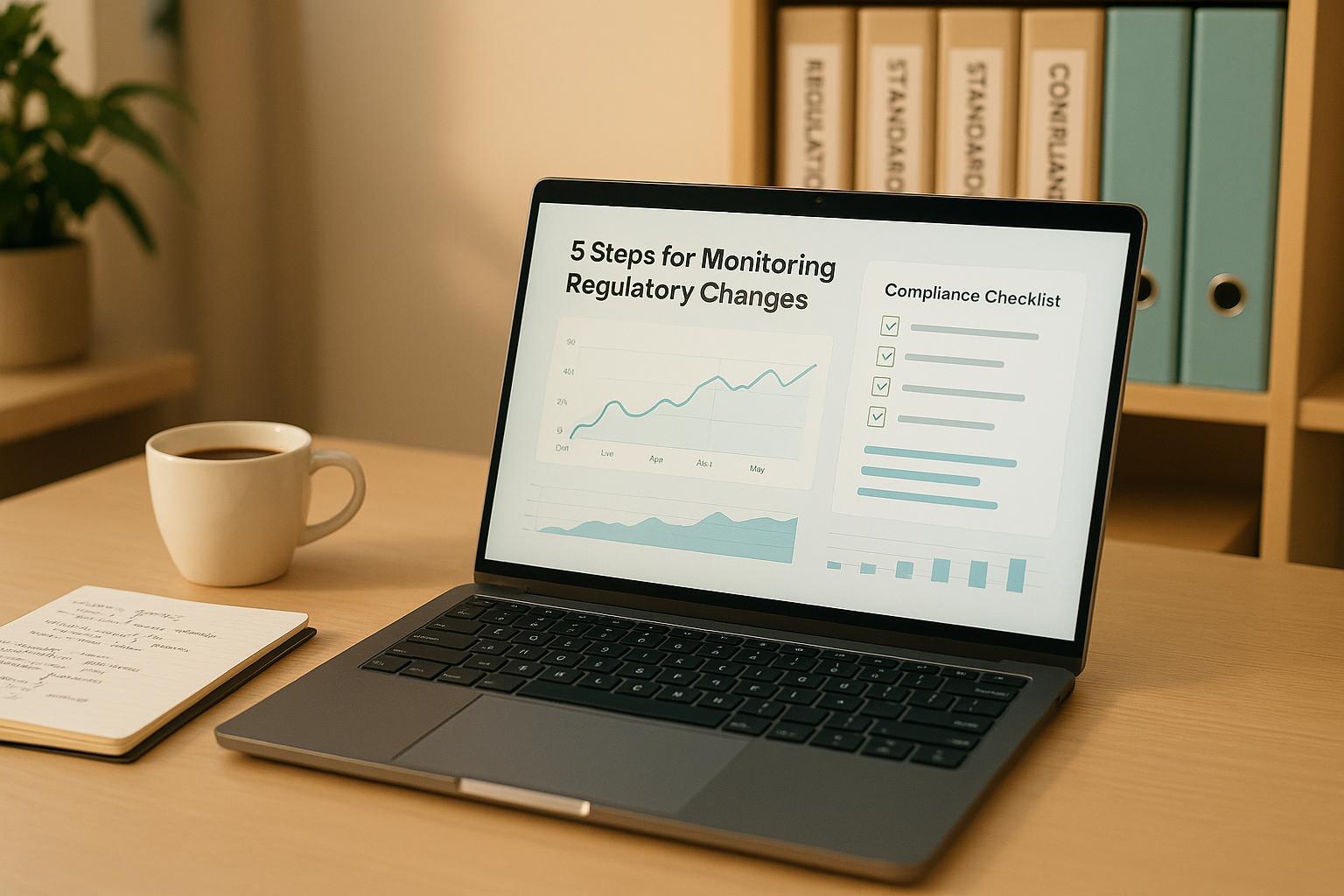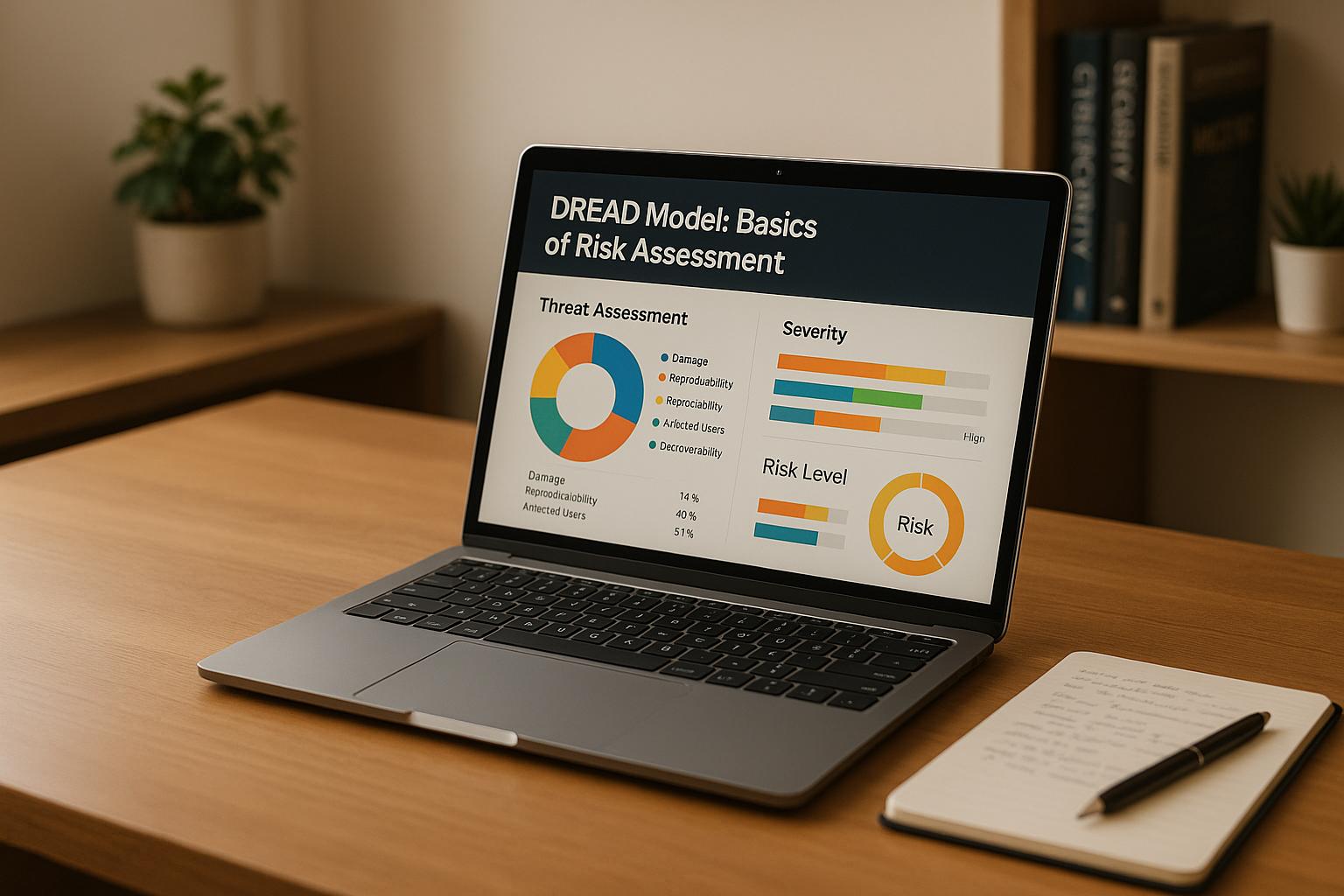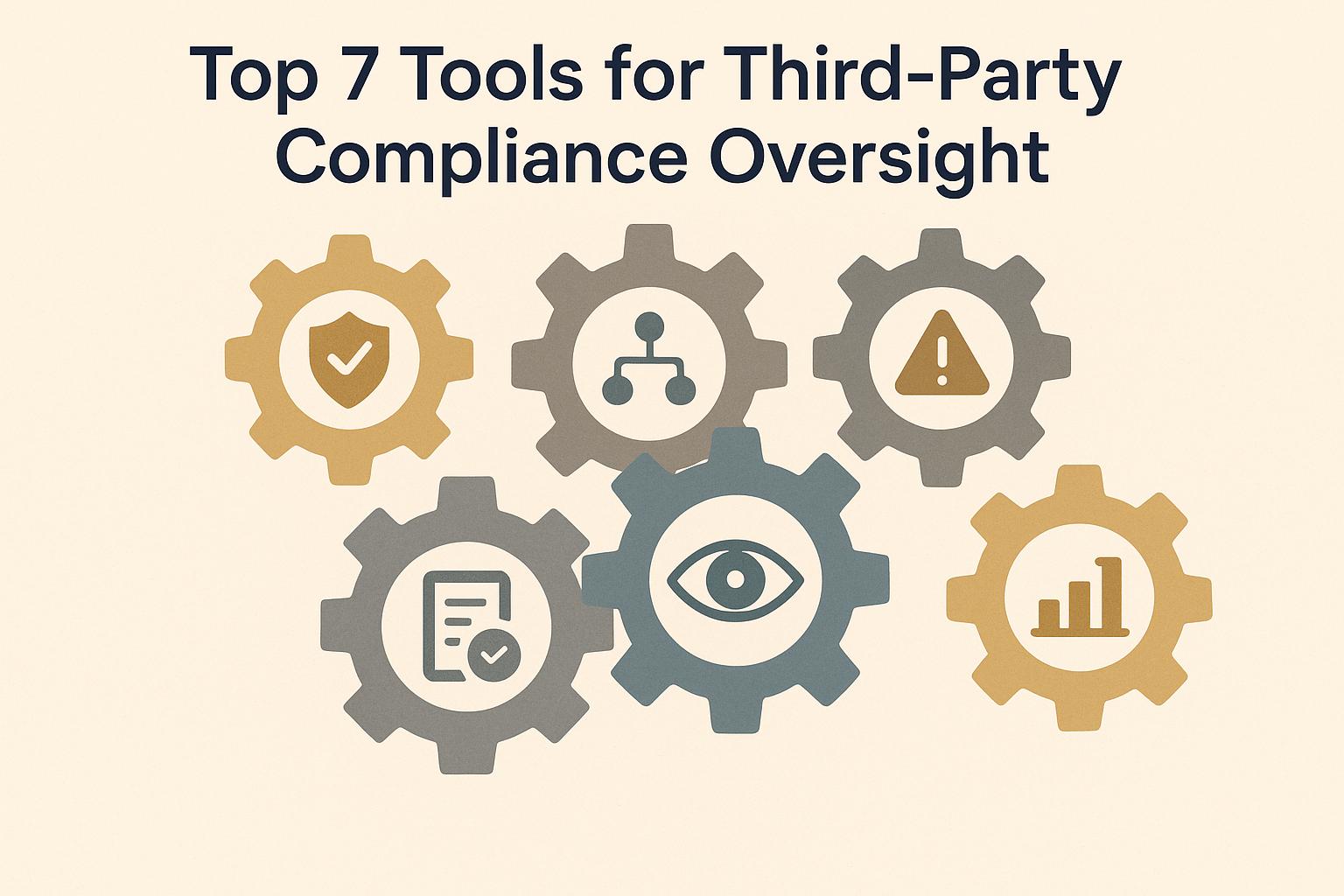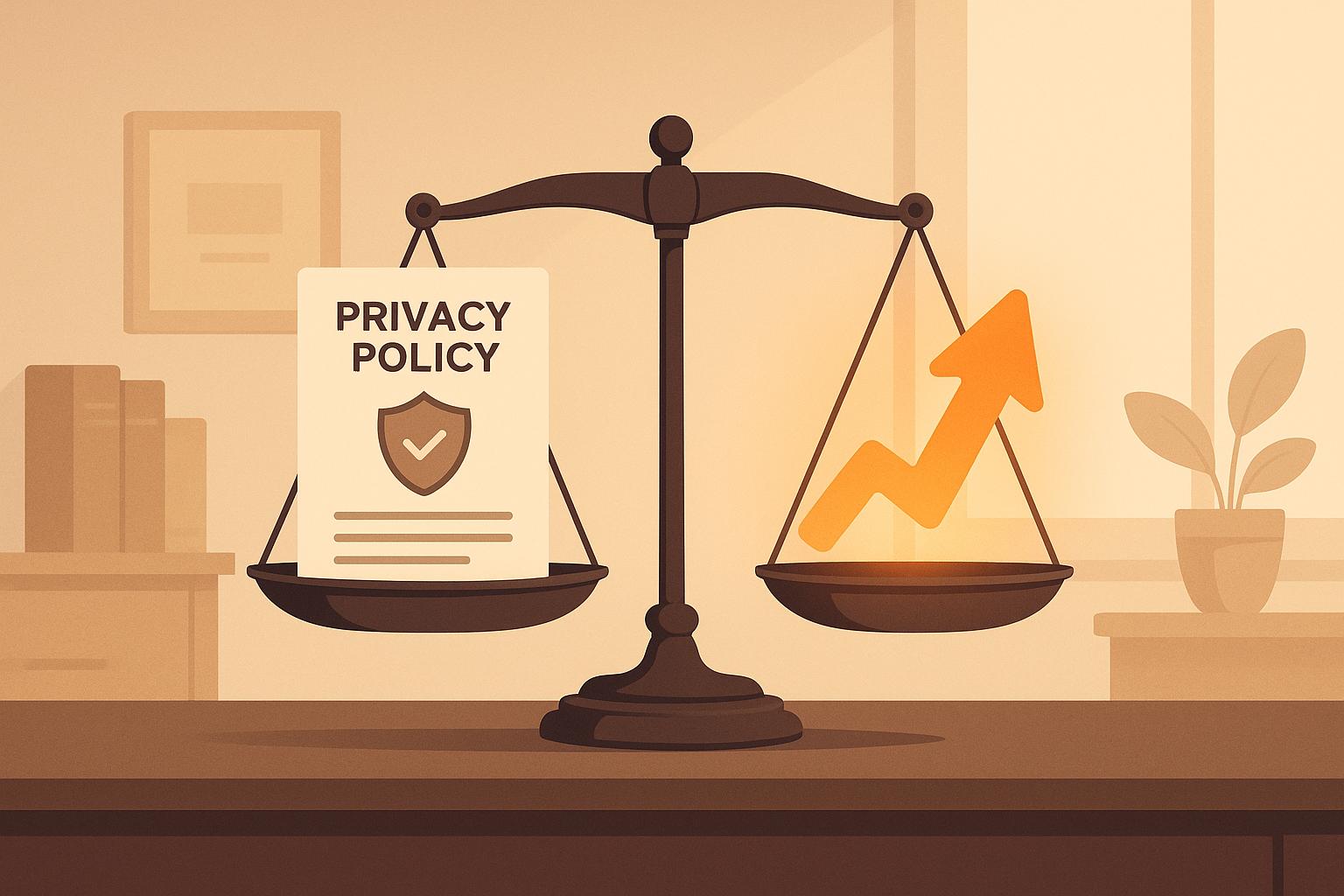
Data retention policies are critical for ISO 27001 compliance. They define how long data is stored, ensure secure disposal, and help businesses comply with laws like GDPR and HIPAA. Here's what you need to know:
- Key Elements: Classify data (e.g., personal, operational), set retention timelines, secure storage with encryption, and ensure proper disposal.
- Benefits: Reduce risks, improve efficiency, and build trust with clients.
-
Steps to Implement:
- Identify data types and legal requirements.
- Define retention periods (minimum and maximum).
- Secure data with access controls, encryption, and backups.
- Use compliant disposal methods (e.g., shredding, secure deletion).
- Regularly review and update policies.
A strong data retention policy aligns with ISO 27001, reduces compliance risks, and enhances data security.
Required Elements of ISO 27001 Data Retention
Data Types and Categories
An effective data retention policy starts with clear data classification. Break data into categories based on sensitivity and legal requirements:
- Business-Critical Data: Includes financial records, contracts, and strategic documents.
- Personal Information: Covers employee and customer data governed by privacy laws.
- Operational Data: Includes system logs, audit trails, and performance metrics.
- Compliance Documentation: Encompasses ISO 27001 audit reports and certification materials.
Each type of data needs specific handling procedures and retention timelines that align with ISO 27001 controls.
Setting Retention Timeframes
Retention periods should be defined based on legal requirements (e.g., 7 years for U.S. tax records), industry standards, business needs, and storage costs.
Retention schedules should outline both minimum and maximum timeframes for each data category, ensuring compliance and efficiency.
Data Storage Security
Protecting retained data requires robust security measures:
1. Access Control Systems
Use role-based access control (RBAC) to restrict data access. Implement strong authentication protocols and log all access attempts to sensitive repositories.
2. Encryption Standards
Secure data with AES-256 encryption for storage and TLS 1.3 for transmission.
3. Backup Procedures
Follow the 3-2-1 rule for backups:
- Keep three copies of your data.
- Use two different types of storage.
- Store one copy off-site for disaster recovery.
Once data is securely stored, ensure its eventual disposal is handled with equal care.
Data Removal Methods
Properly disposing of data after its retention period ends is just as important as secure storage.
Physical Media
- For hard drives, use DoD-compliant wiping tools or physically destroy the drives.
- For paper documents, rely on cross-cut shredding or certified destruction services.
Digital Storage
- For cloud storage, confirm data is fully removed from all backup locations.
- For databases, use secure deletion protocols and verify the process.
Keep detailed records of disposals, such as certificates of destruction, and perform regular audits to ensure compliance with ISO 27001 standards.
Laws and Regulations
Global and Local Laws
When creating an ISO 27001 data retention policy, it's crucial to align it with both international standards and U.S. legal requirements. This approach ensures compliance with regulations like GDPR and HIPAA, which are essential for meeting legal obligations and maintaining trust.
Frequent reviews are necessary to keep the policy in step with evolving laws. These regulations provide the foundation for maintaining effective data retention practices.
ISO 27001 Protection of Records | Annex A 5.33 | Explained
sbb-itb-ec1727d
Policy Setup and Management Steps
Setting up an ISO 27001 data retention program requires careful planning to ensure data is handled correctly and meets compliance standards.
Team Responsibilities
Define clear roles to establish accountability. Key team members typically include:
- Data Protection Officer (DPO): Oversees compliance with privacy regulations.
- Virtual CISO (vCISO): Develops security strategies and manages their implementation.
- Department Leaders: Identify and classify data within their respective units.
- IT Personnel: Manage technical aspects of data storage and secure deletion.
Document each member's responsibilities, and hold regular coordination meetings to keep everyone aligned. Ensure these roles are backed by detailed documentation for clarity and consistency.
Required Documents
Support the team's responsibilities with these critical documents:
- Data Inventory Matrix: A detailed catalog of all data types, their retention periods, and classification levels.
- Retention Schedule: Specific timeframes for retaining different categories of data.
- Disposal Procedures: Step-by-step instructions for securely deleting data.
- Compliance Checklists: Records verifying adherence to retention policies.
- Audit Logs: Documentation of all data handling activities and policy updates.
Regularly review and update these documents to stay aligned with business needs and regulatory changes.
Staff Training
Effective data retention depends heavily on training your staff. Focus on these key areas:
- Basic Data Handling: Understanding different types of data and their retention requirements.
- Security Protocols: Best practices for safeguarding sensitive information.
- Compliance Requirements: Key regulations influencing data retention practices.
- Individual Responsibilities: Specific roles employees play in maintaining compliance.
Conduct training sessions annually or whenever policies change, and keep records of participation to demonstrate compliance. This ensures everyone is prepared to manage data responsibly.
Review and Updates
Regular reviews are crucial for staying compliant with ISO 27001 and ensuring strong data protection. Taking a structured approach helps organizations spot weaknesses and maintain robust security measures.
Internal Reviews
Evaluate your policies by focusing on key areas:
- Audit data handling: Check documentation for accurate retention schedules and confirm access controls are in place.
- Test user permissions: Review access management to ensure only authorized personnel have access.
- Assess storage systems: Look for vulnerabilities that could compromise data security.
- Verify ISO 27001 compliance: Ensure all processes align with the standard's requirements.
Track how well policies are followed, analyze security incidents, and review how effectively data is disposed of. Document all findings to guide management decisions. These reviews highlight problems needing immediate attention in the next phase.
Fixing Problems
When issues are discovered, address them quickly and methodically:
- Record each problem, noting its severity, affected systems, and compliance impact.
- Assign clear tasks with deadlines to the appropriate team members.
- Implement changes using proper procedures, then thoroughly test to ensure effectiveness.
After resolving issues, keep policies updated to reflect any changes in legal or business requirements.
Keeping Policies Current
Once problems are fixed, take proactive steps to ensure policies remain up to date:
- Schedule regular, annual reviews.
- Stay informed about regulatory changes.
- Adjust retention periods and security measures as needed.
- Consider new threats and system updates when evaluating policies.
- Update controls and document any modifications made.
"Cycore keeps us up to date on our compliance program and notifies us ahead of time if they need something from us." - Nils Schneider, CEO & Co-Founder, Instantly
Continuous monitoring is key to maintaining effective and compliant policies. Collaborate with security professionals to implement updates smoothly and with minimal disruption.
Conclusion
Key Components
Creating an ISO 27001-compliant data retention policy requires a few essential elements. Organizations need to set up clear data classification systems, define retention periods that align with legal requirements, and ensure secure storage practices. Regular audits and secure data disposal processes are also crucial for maintaining compliance over time.
Policy Benefits
Having a solid data retention policy in line with ISO 27001 offers businesses several advantages. Companies that prioritize compliance often see stronger customer relationships and smoother sales processes.
| Benefit | Impact on Business |
|---|---|
| Customer Trust | Builds credibility and strengthens client relationships |
| Sales Efficiency | Speeds up deal closures by demonstrating compliance |
| Risk Reduction | Lowers chances of data breaches and avoids regulatory penalties |
| Competitive Edge | Positions the company favorably in security-focused markets |
These benefits highlight the importance of having expert assistance to maintain effective compliance practices.
Cycore Services
For organizations seeking support with ISO 27001 data retention, Cycore Secure offers a range of vCISO and compliance management services. Their customized strategies cover everything from initial assessments to certification, ensuring your data retention policies meet ISO 27001 standards. Cycore's flexible service tiers are designed to grow with your business, providing the right level of support as compliance needs evolve.
"Cycore provided exemplary service in managing our compliance needs. Their team's experience is evident with how quickly they were able to solve our challenges." - David Kim, Co-Founder, Monterra



